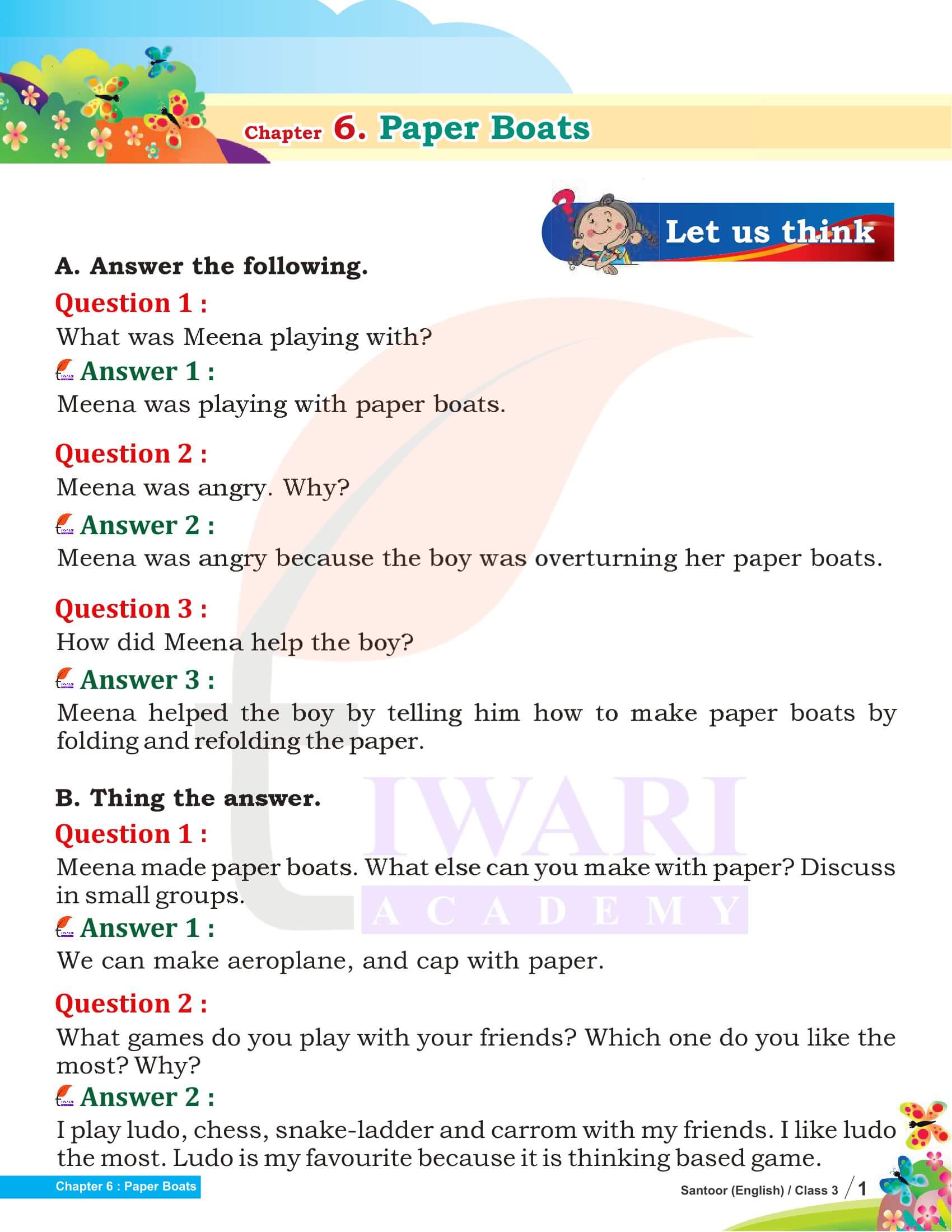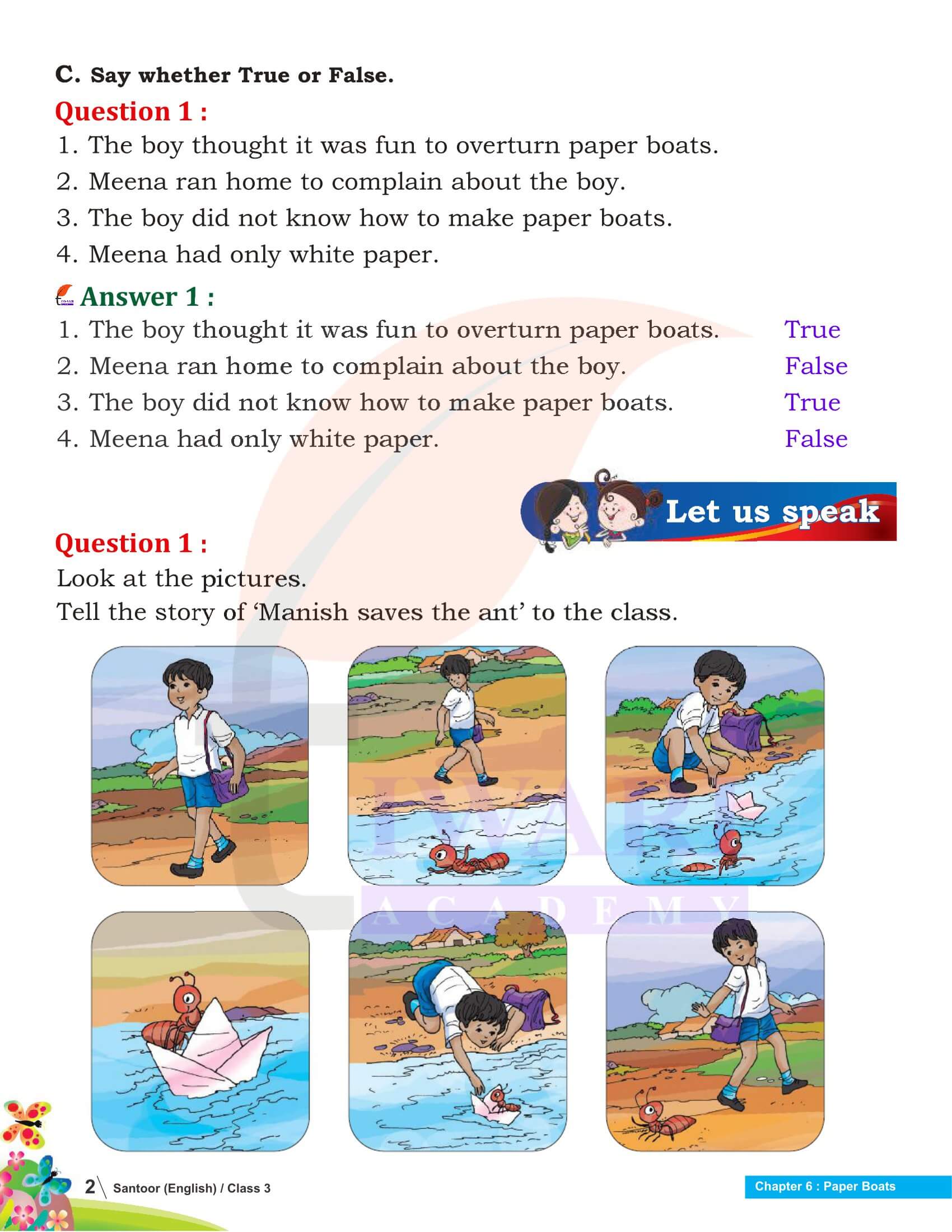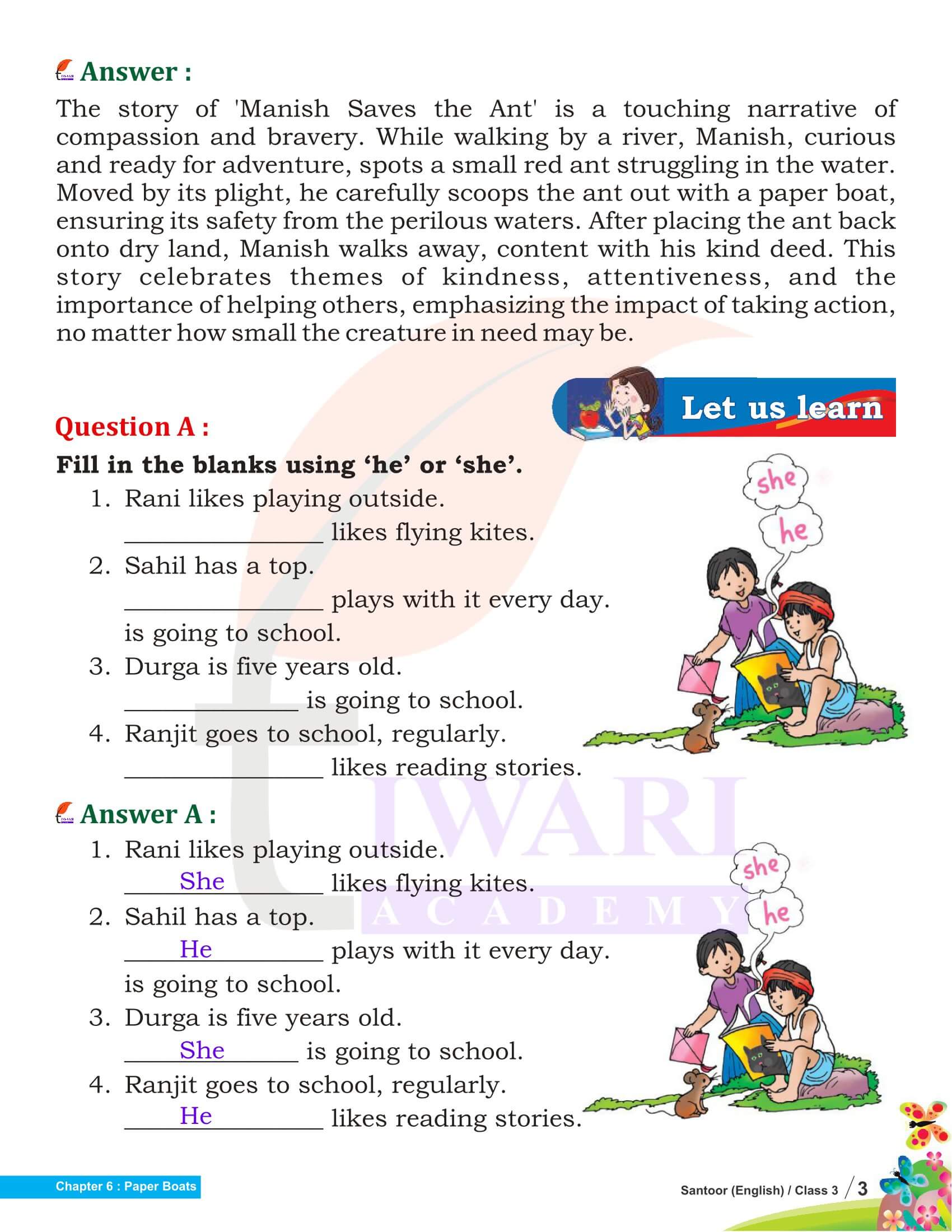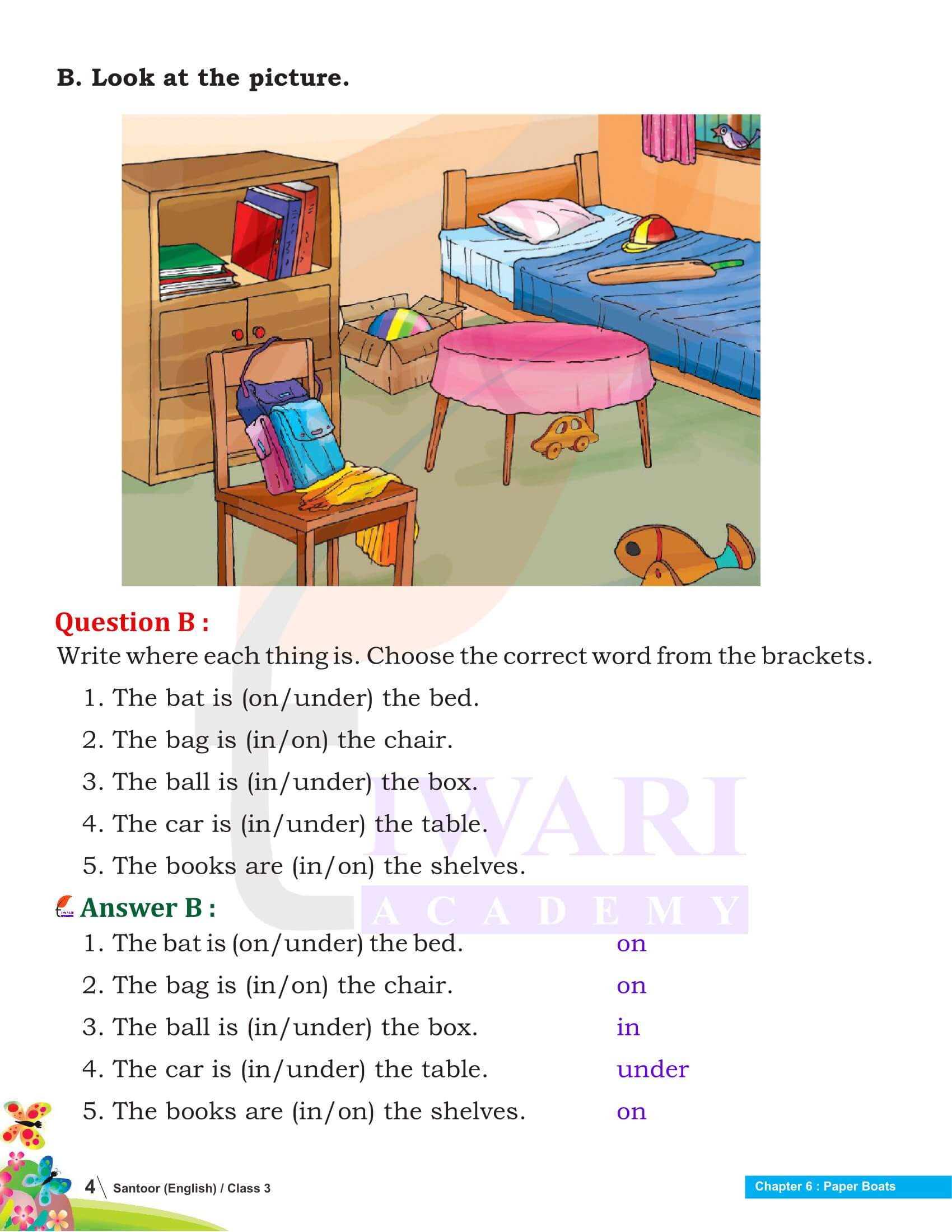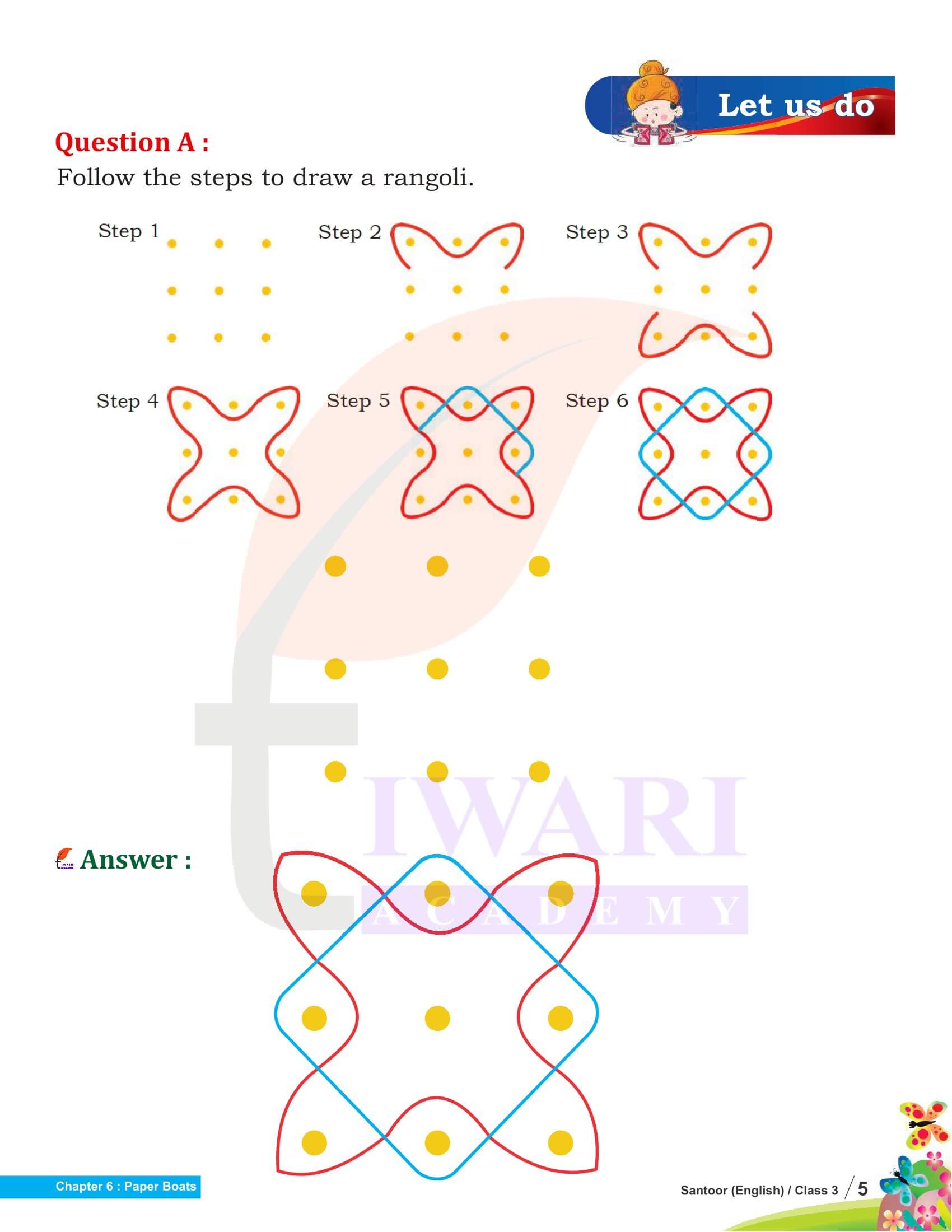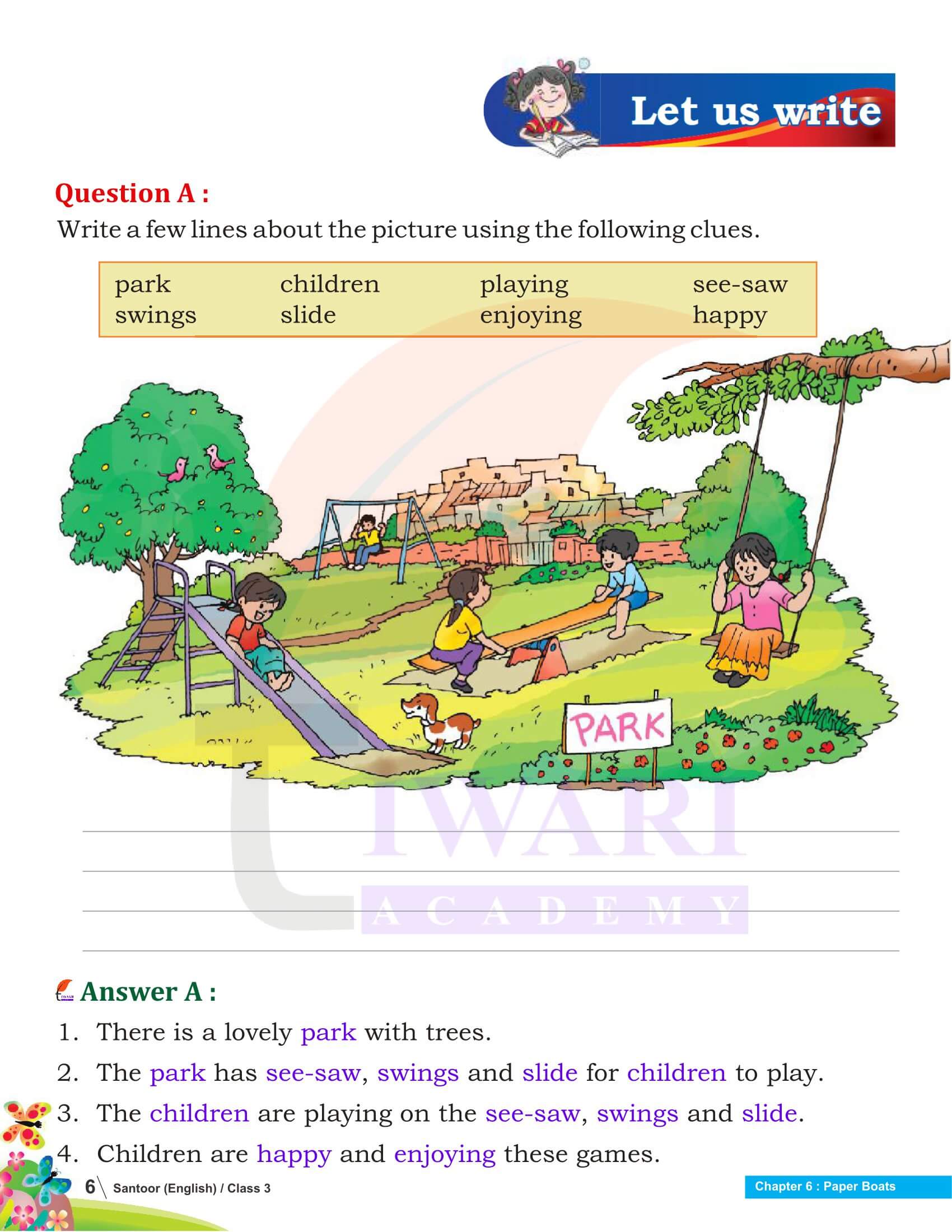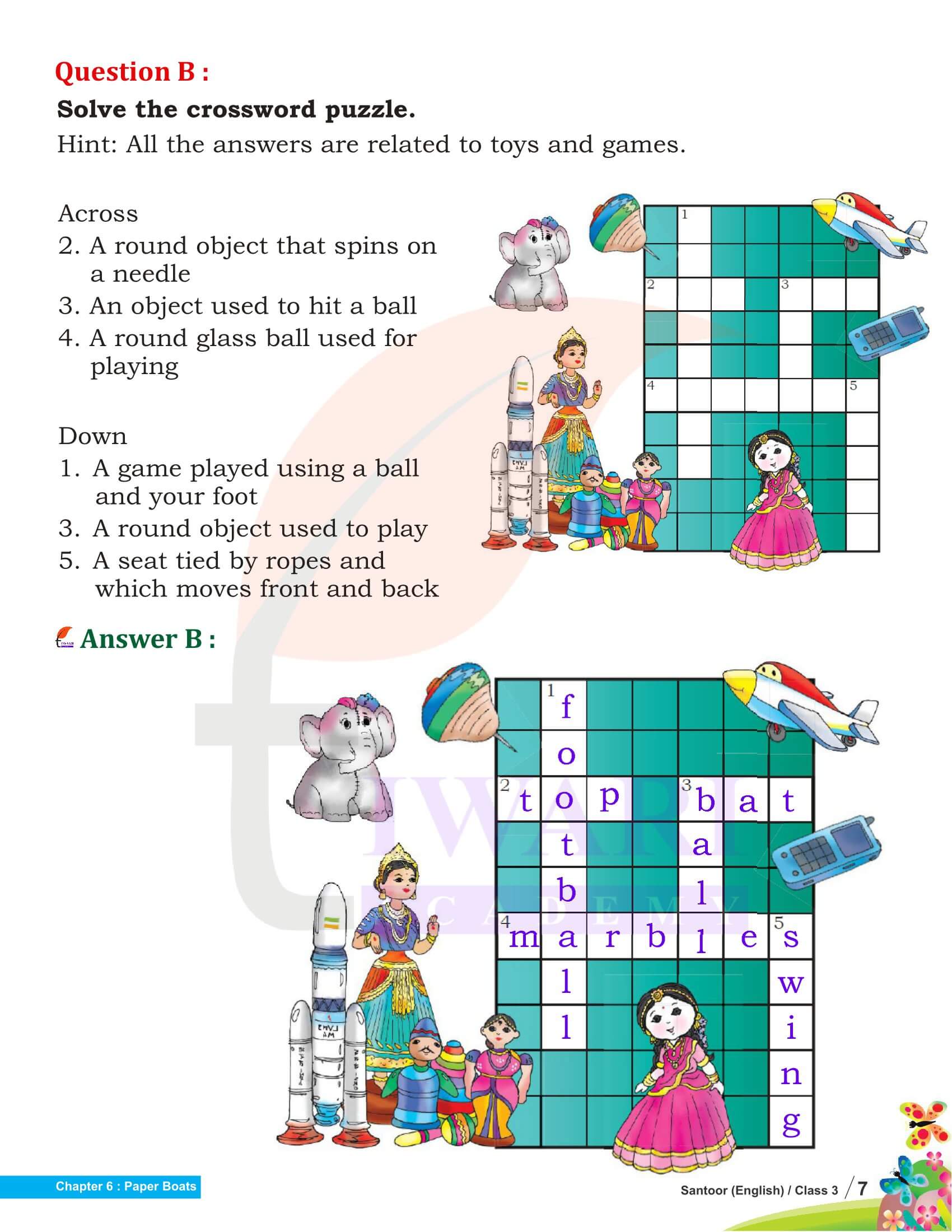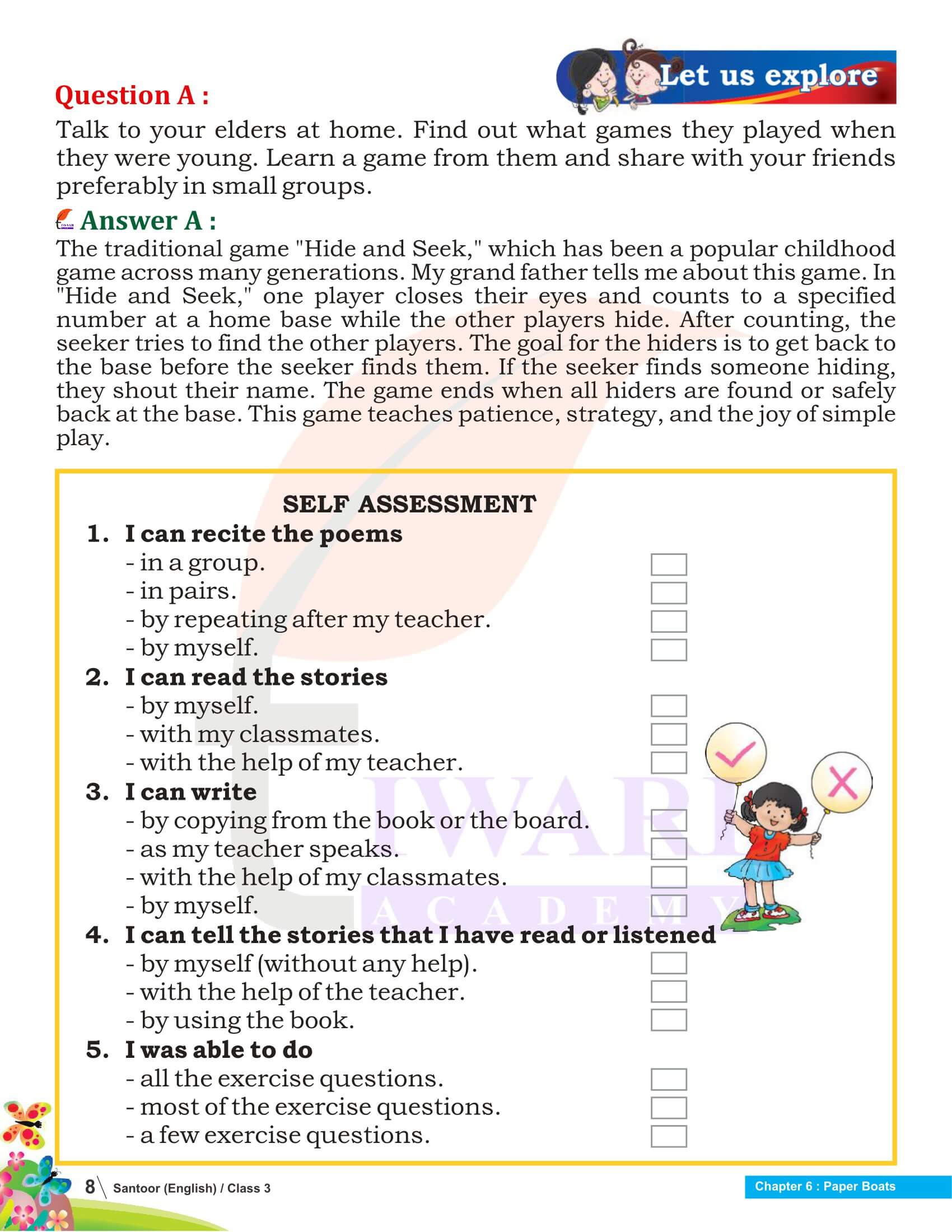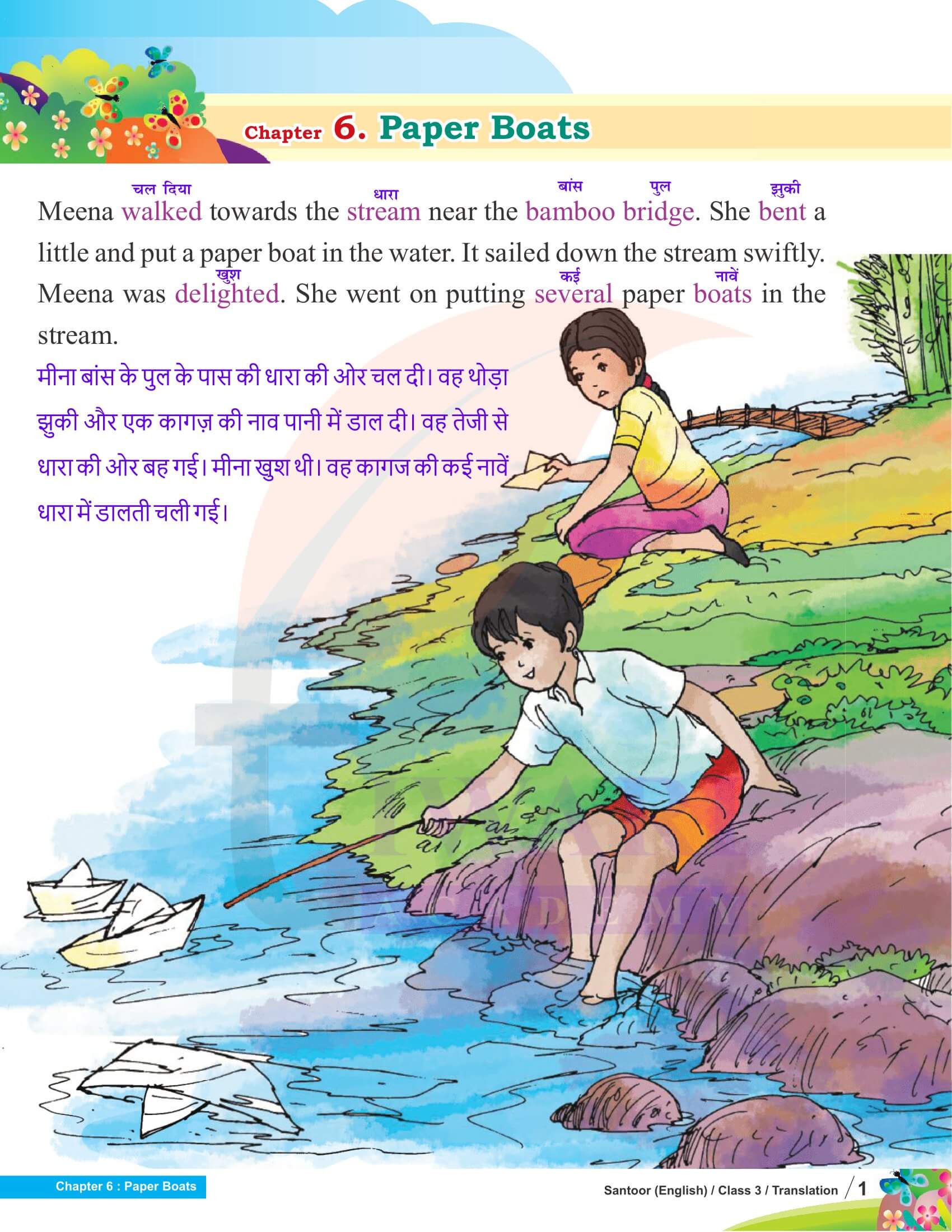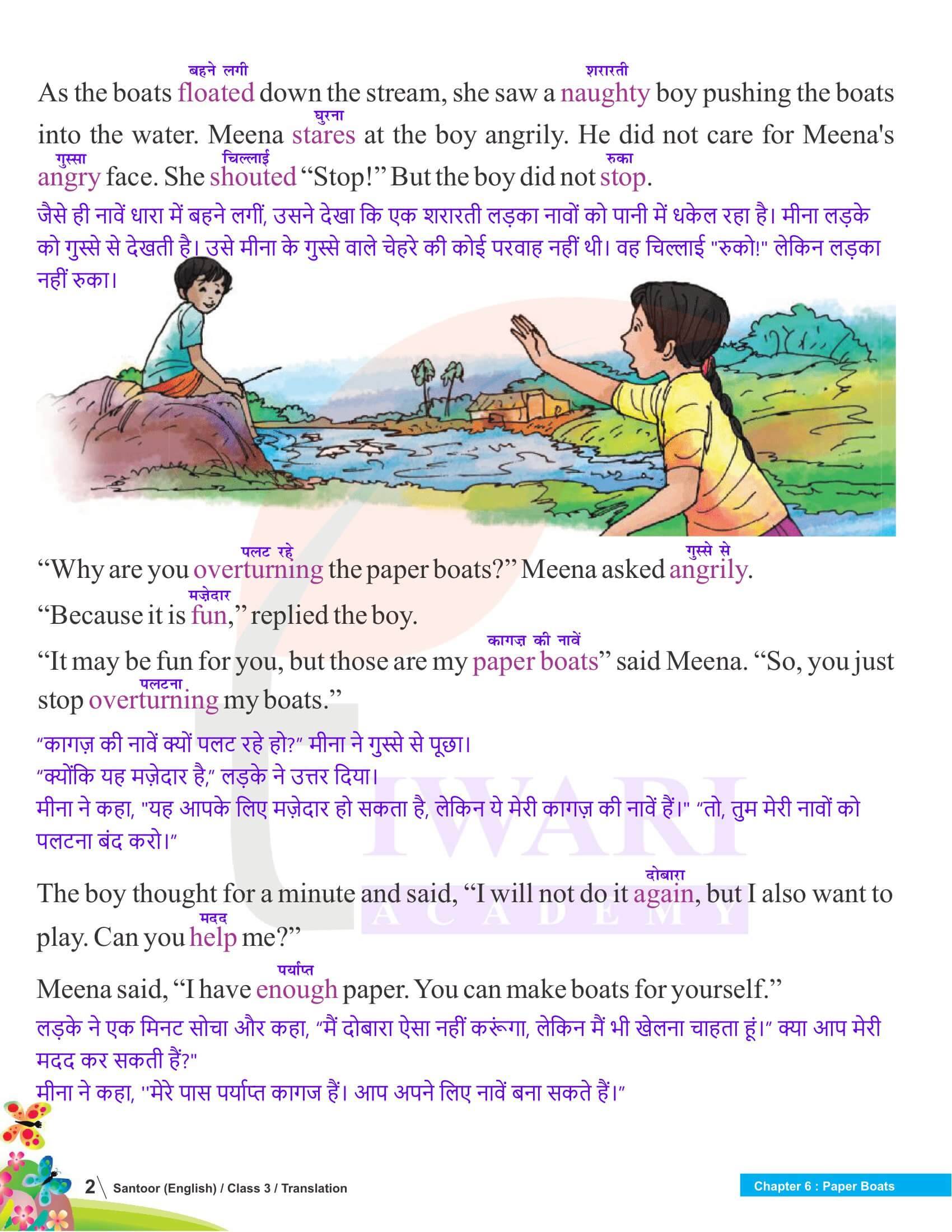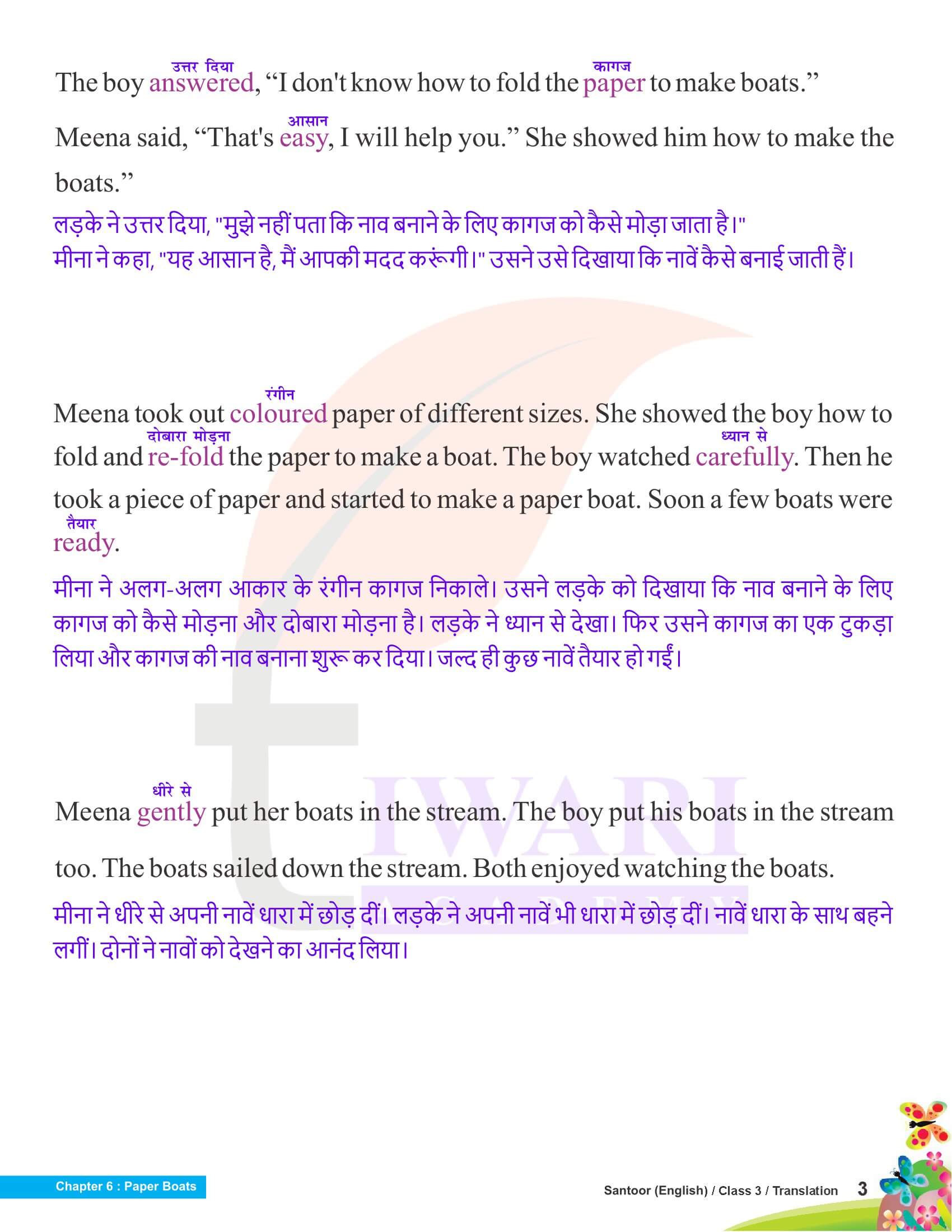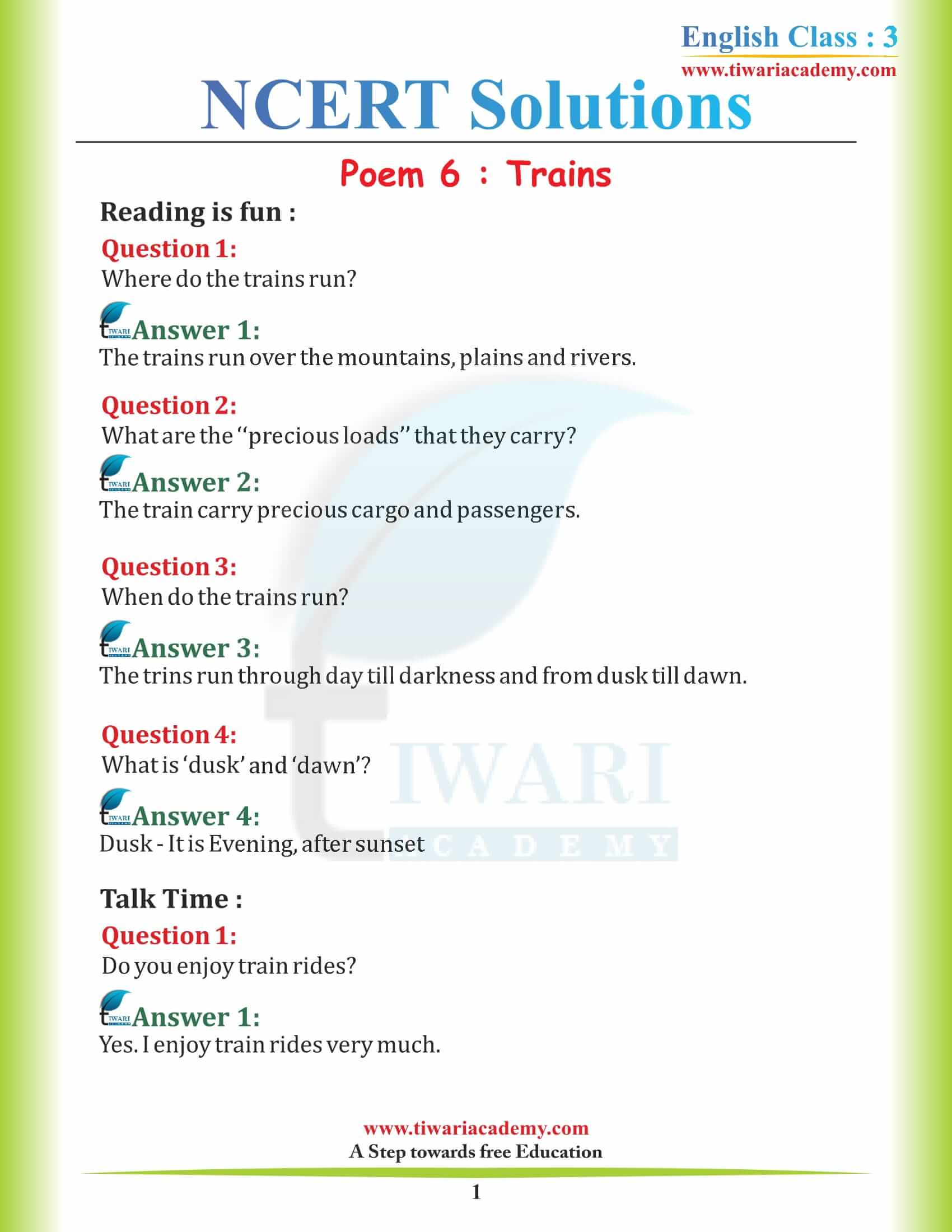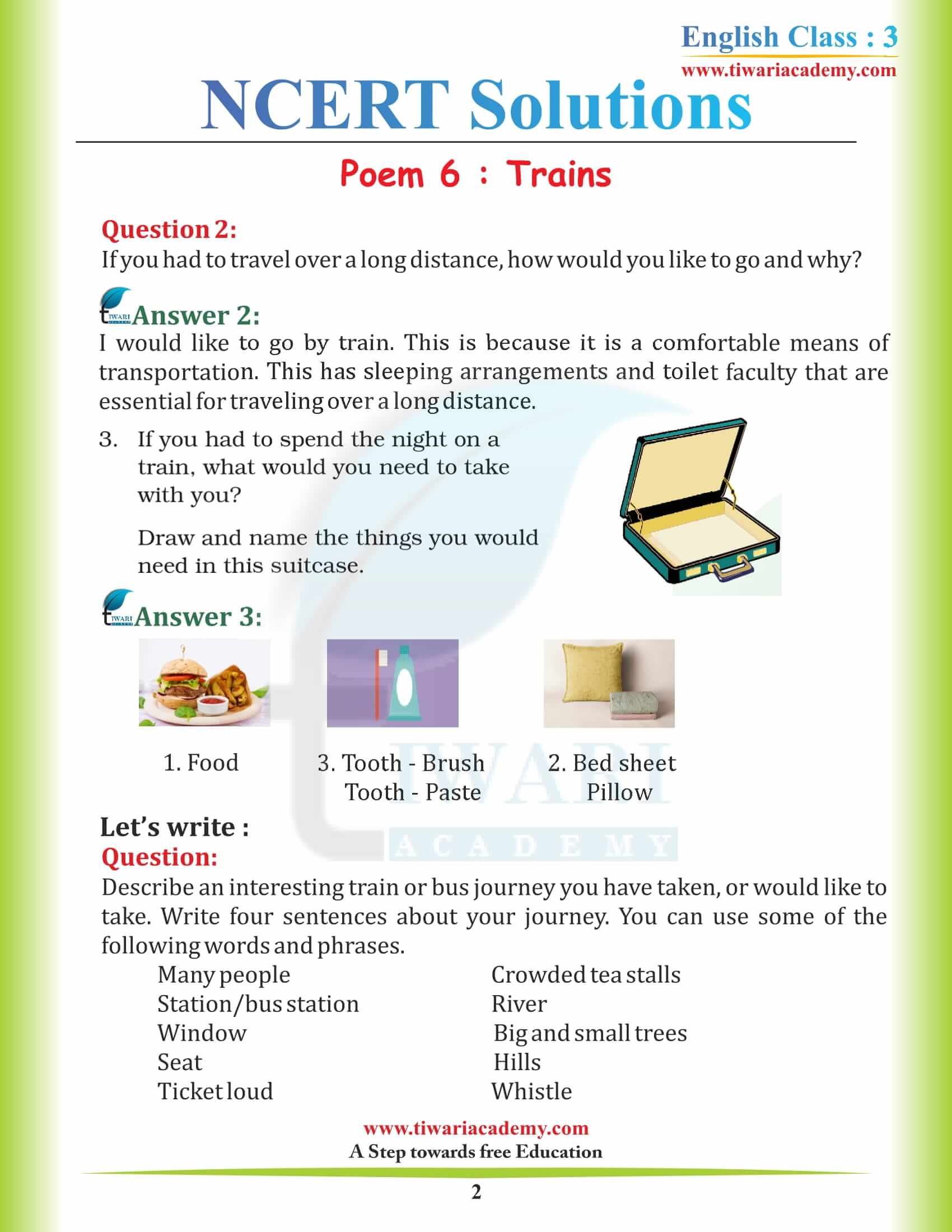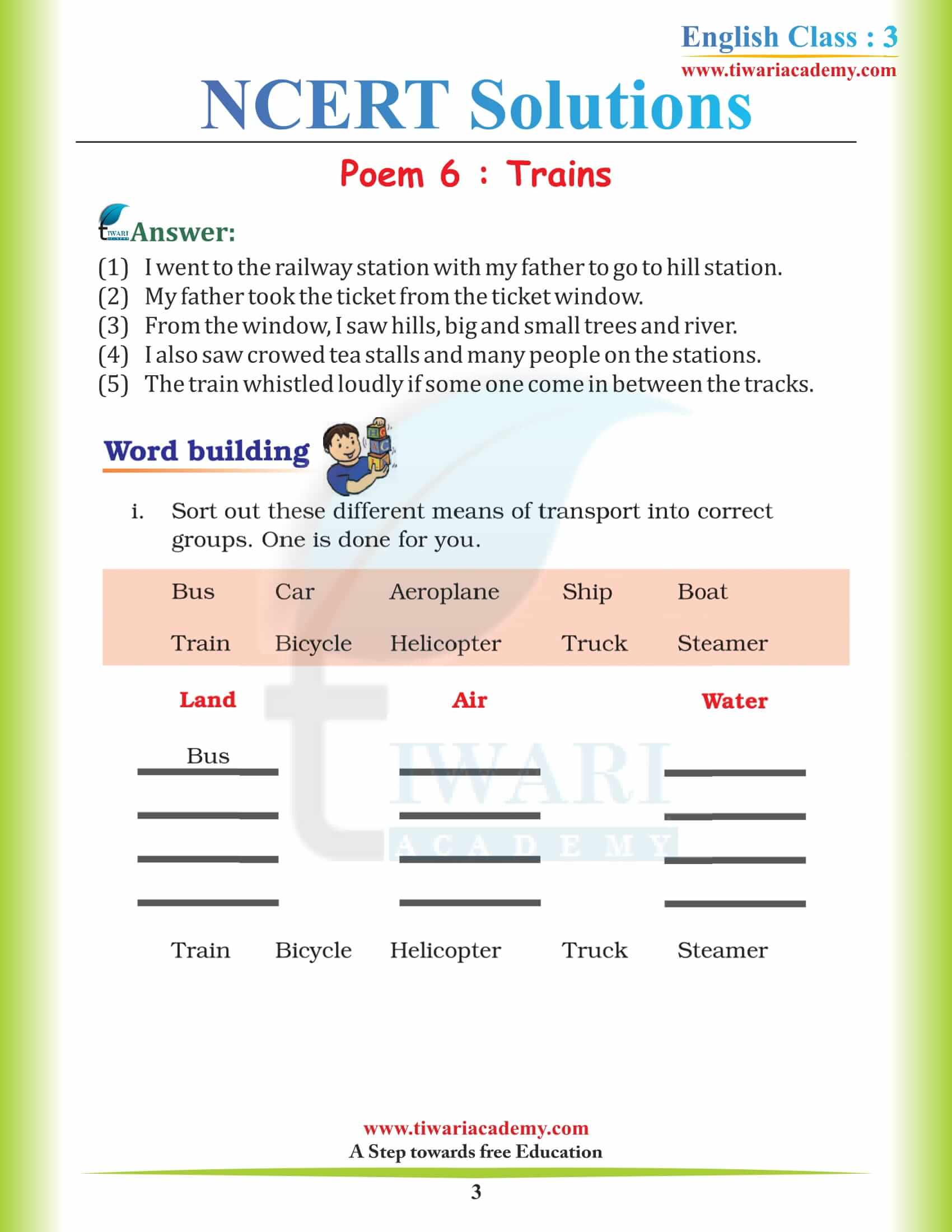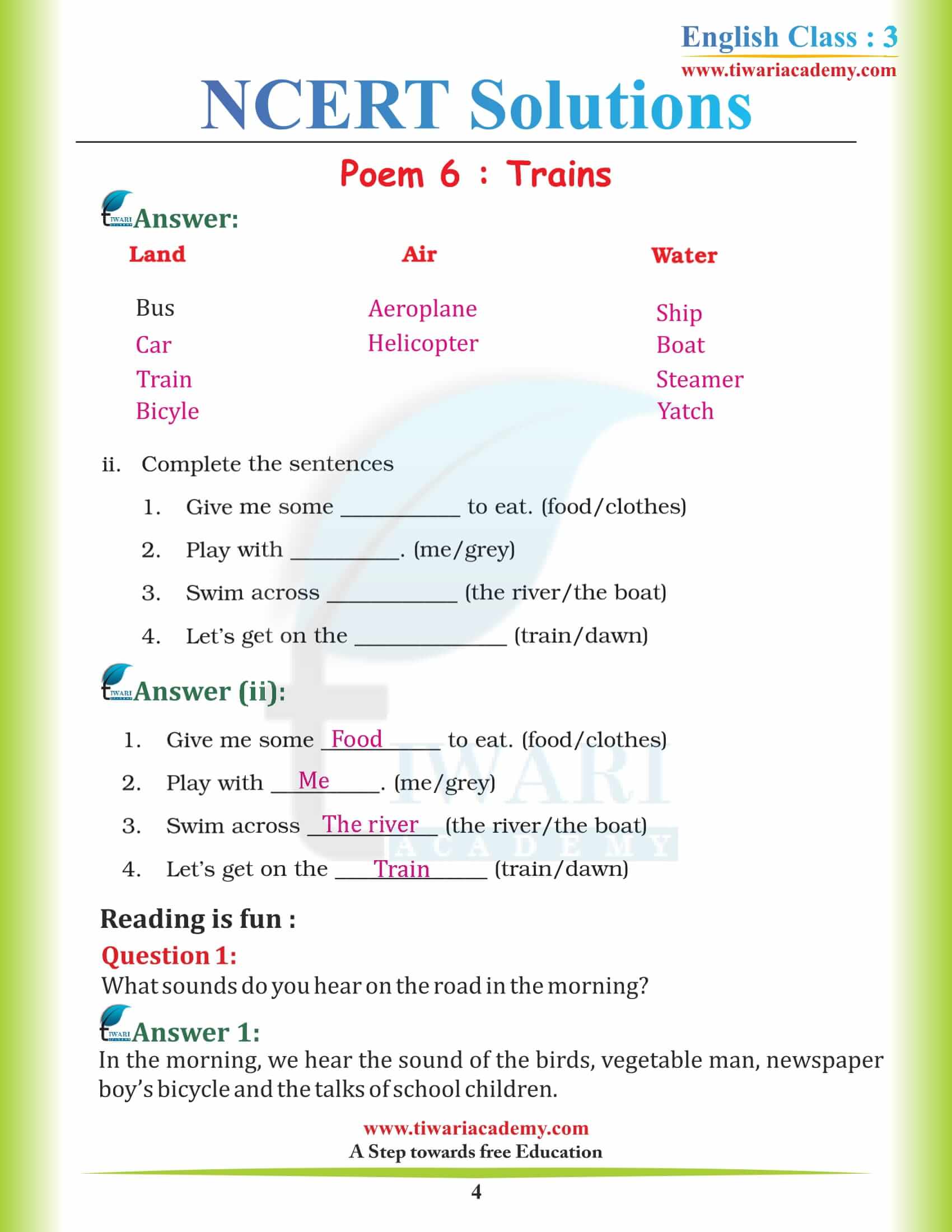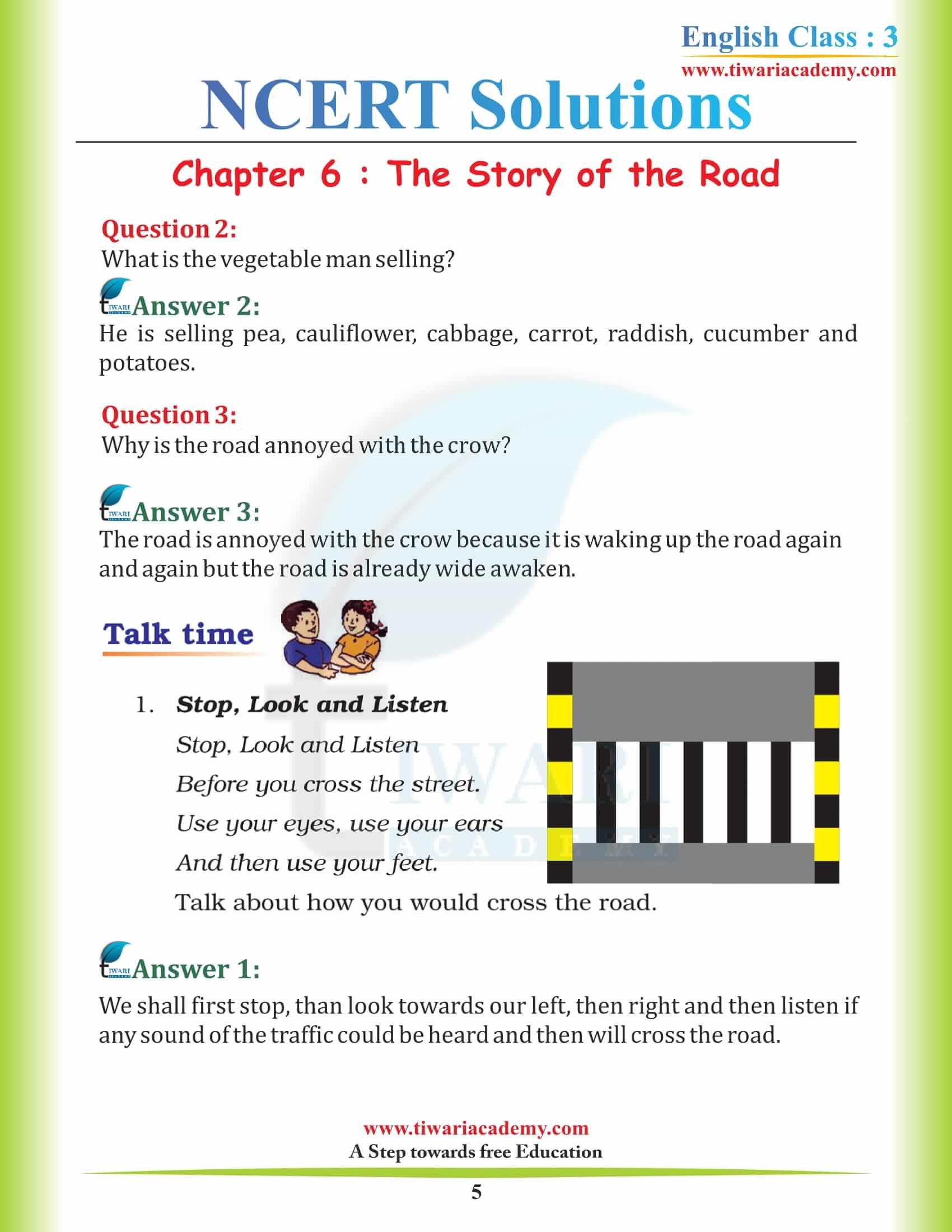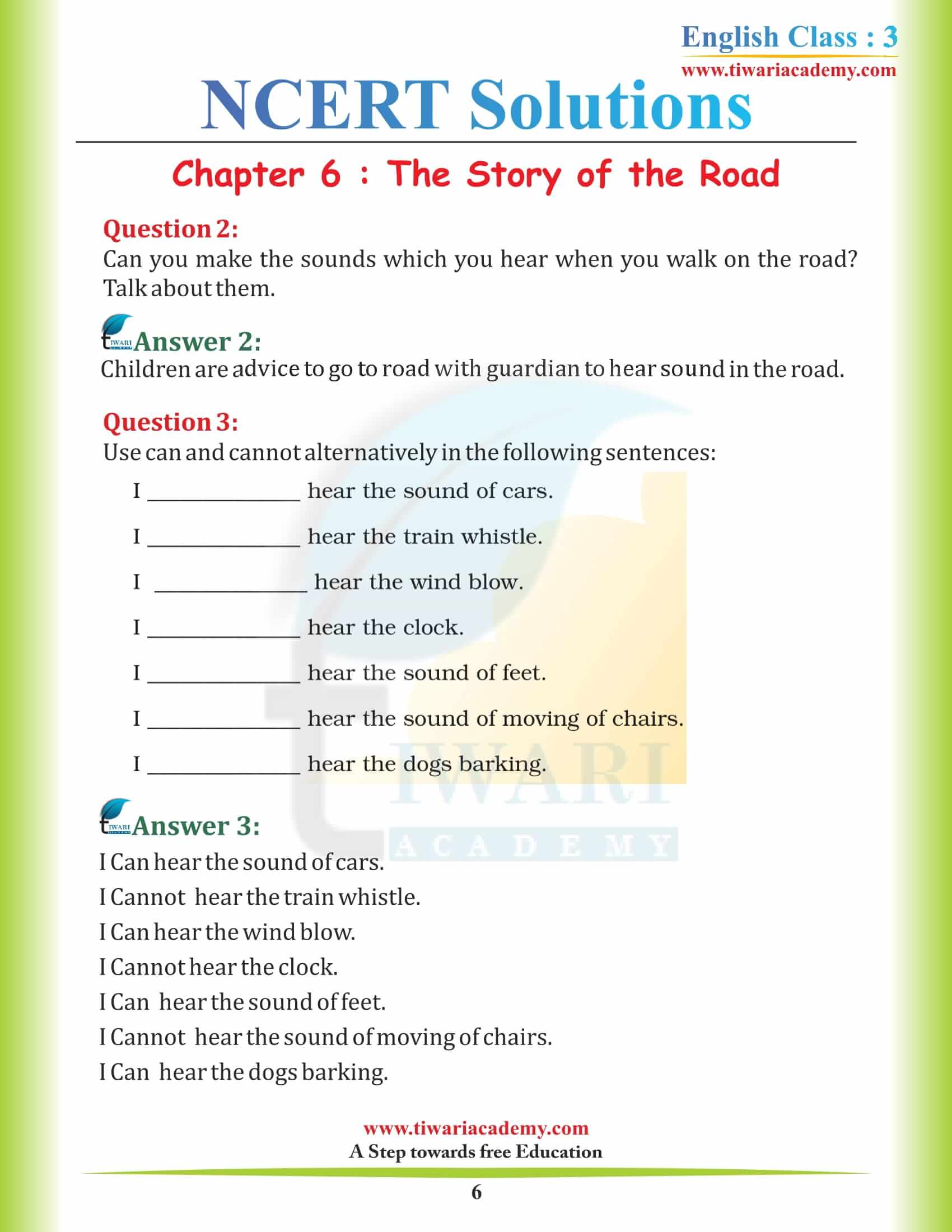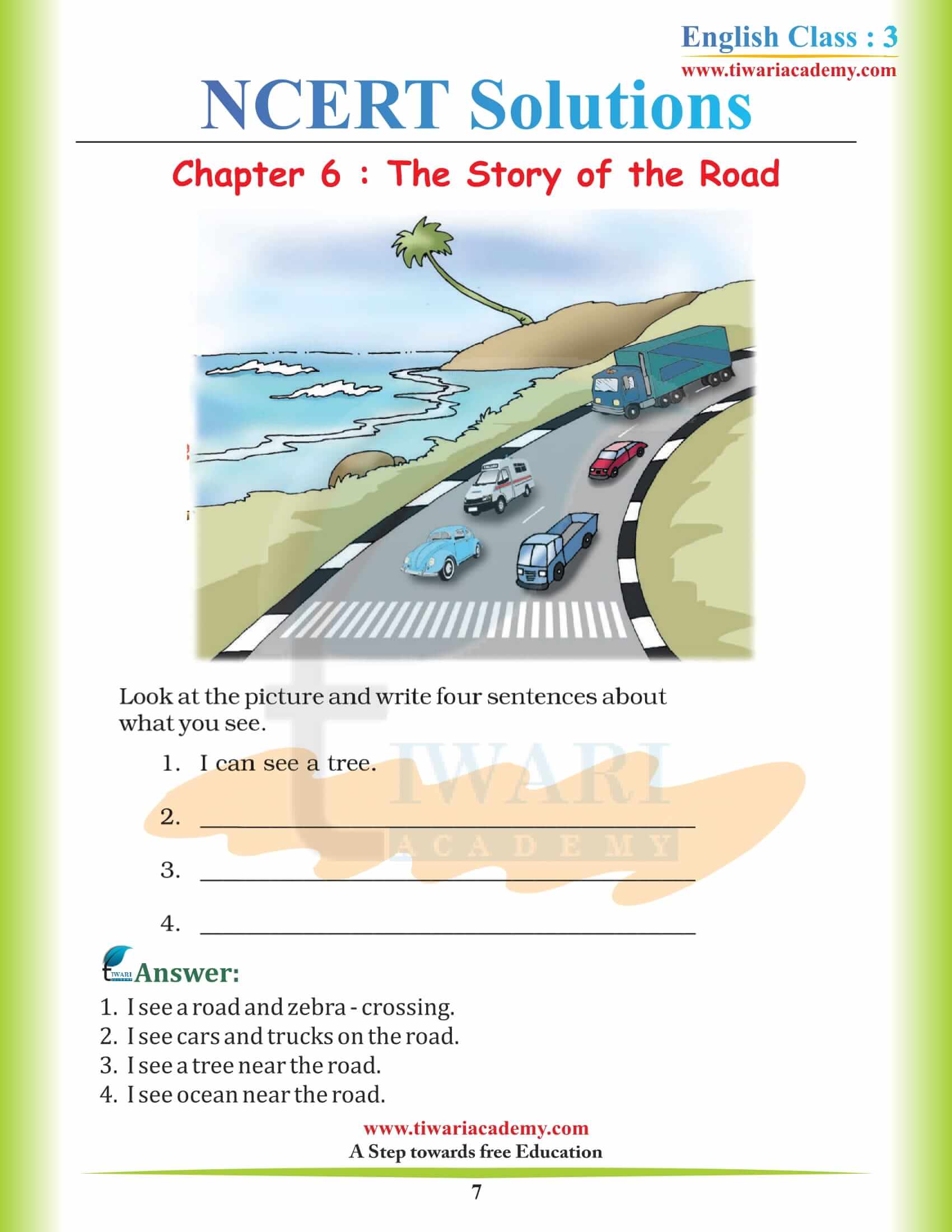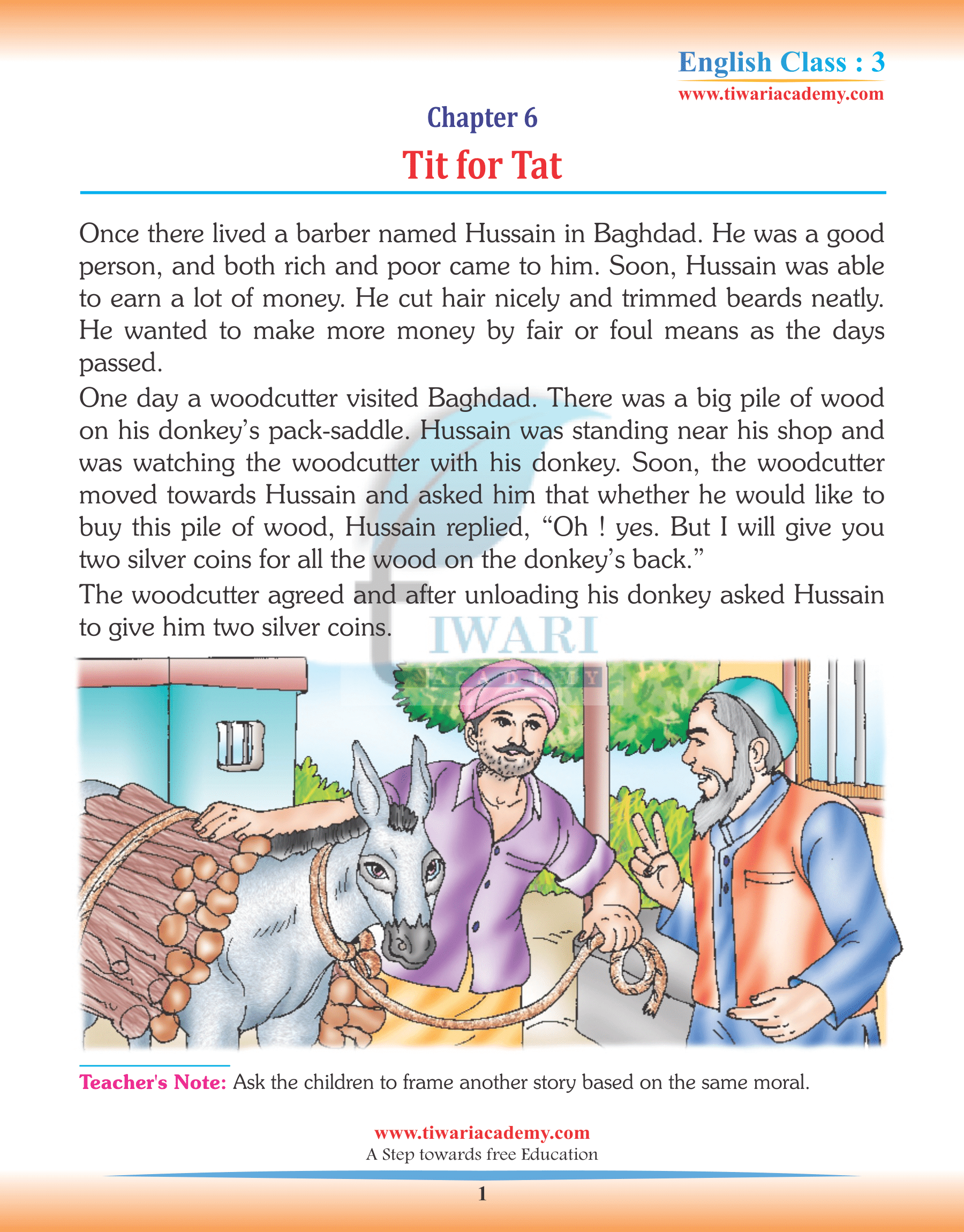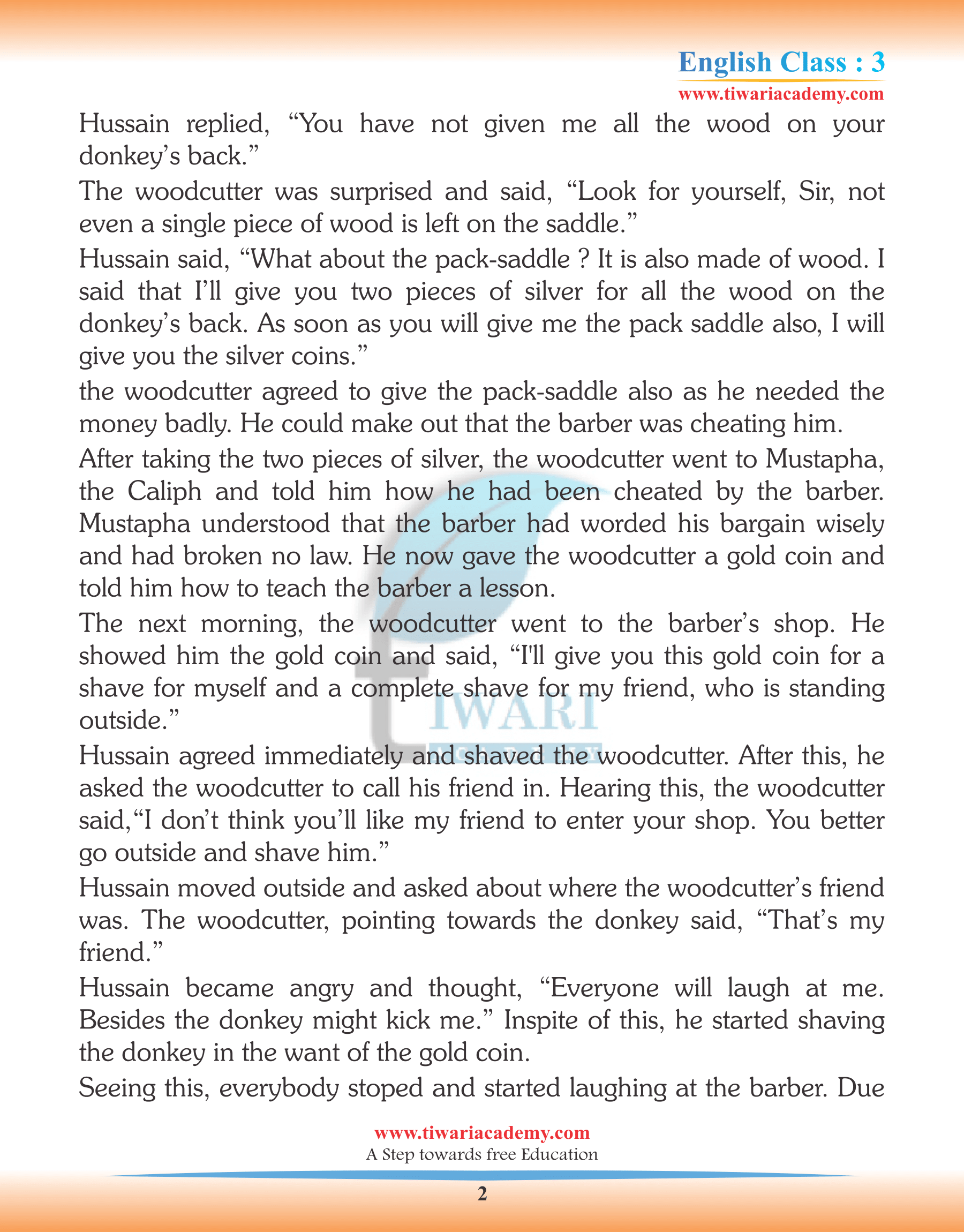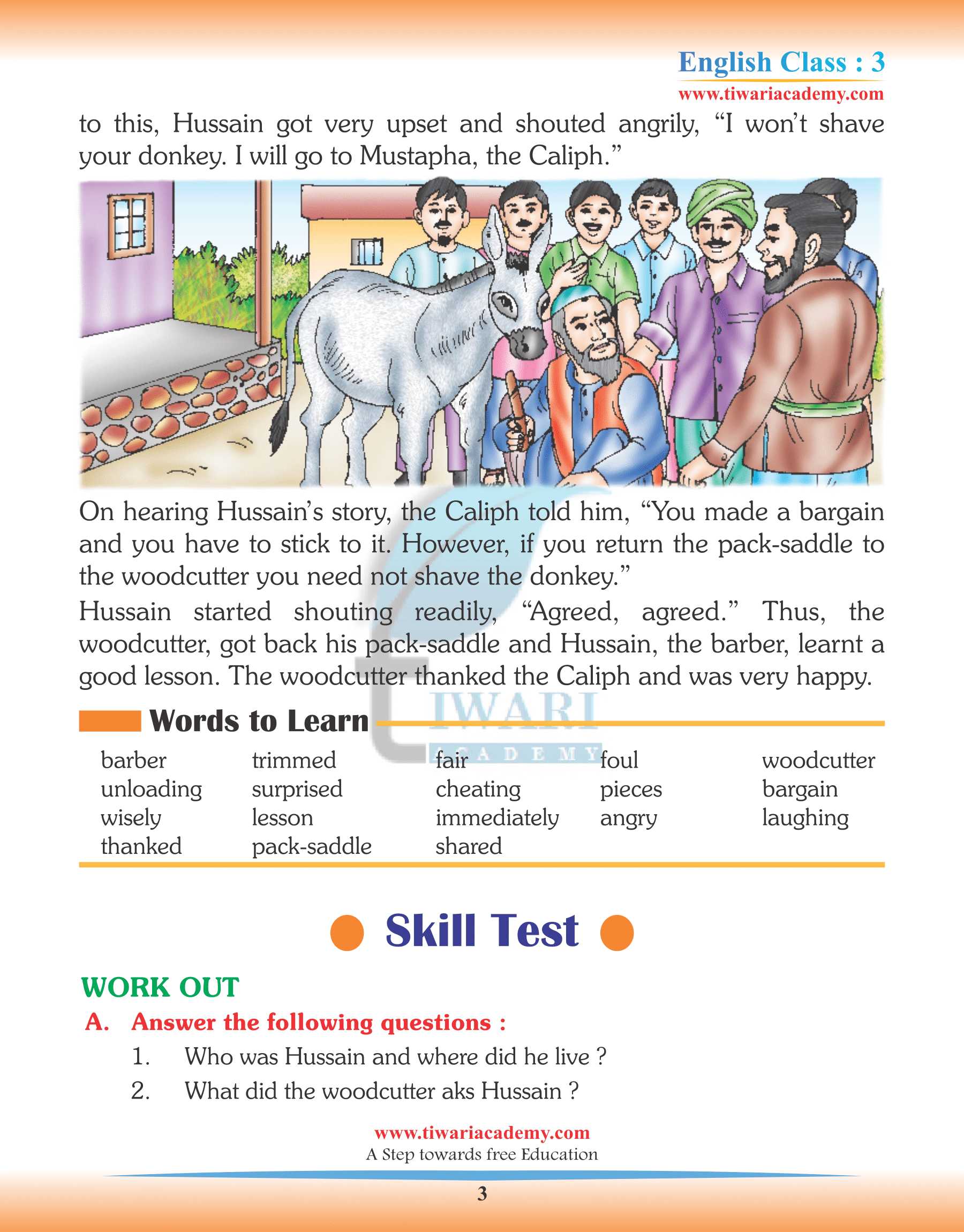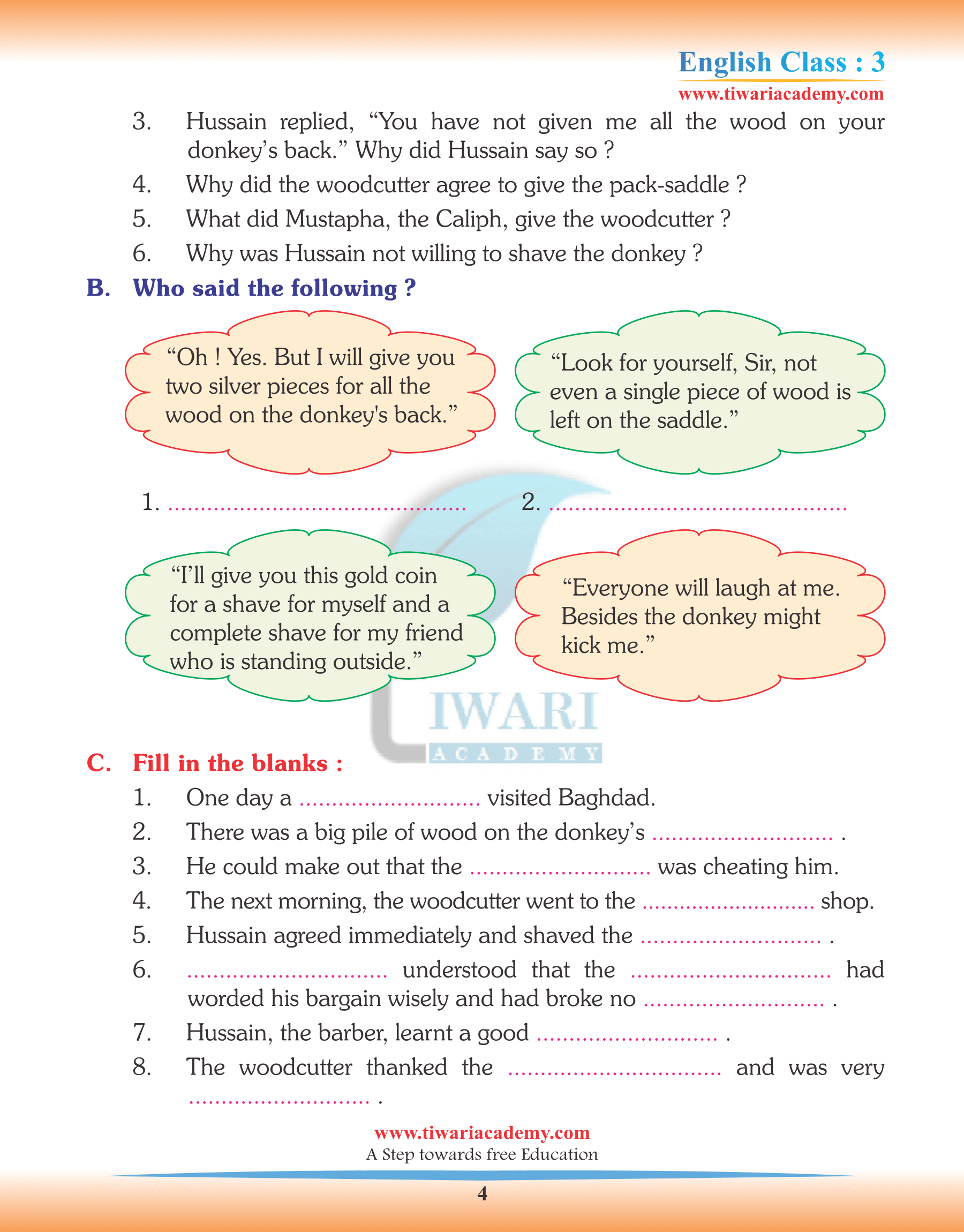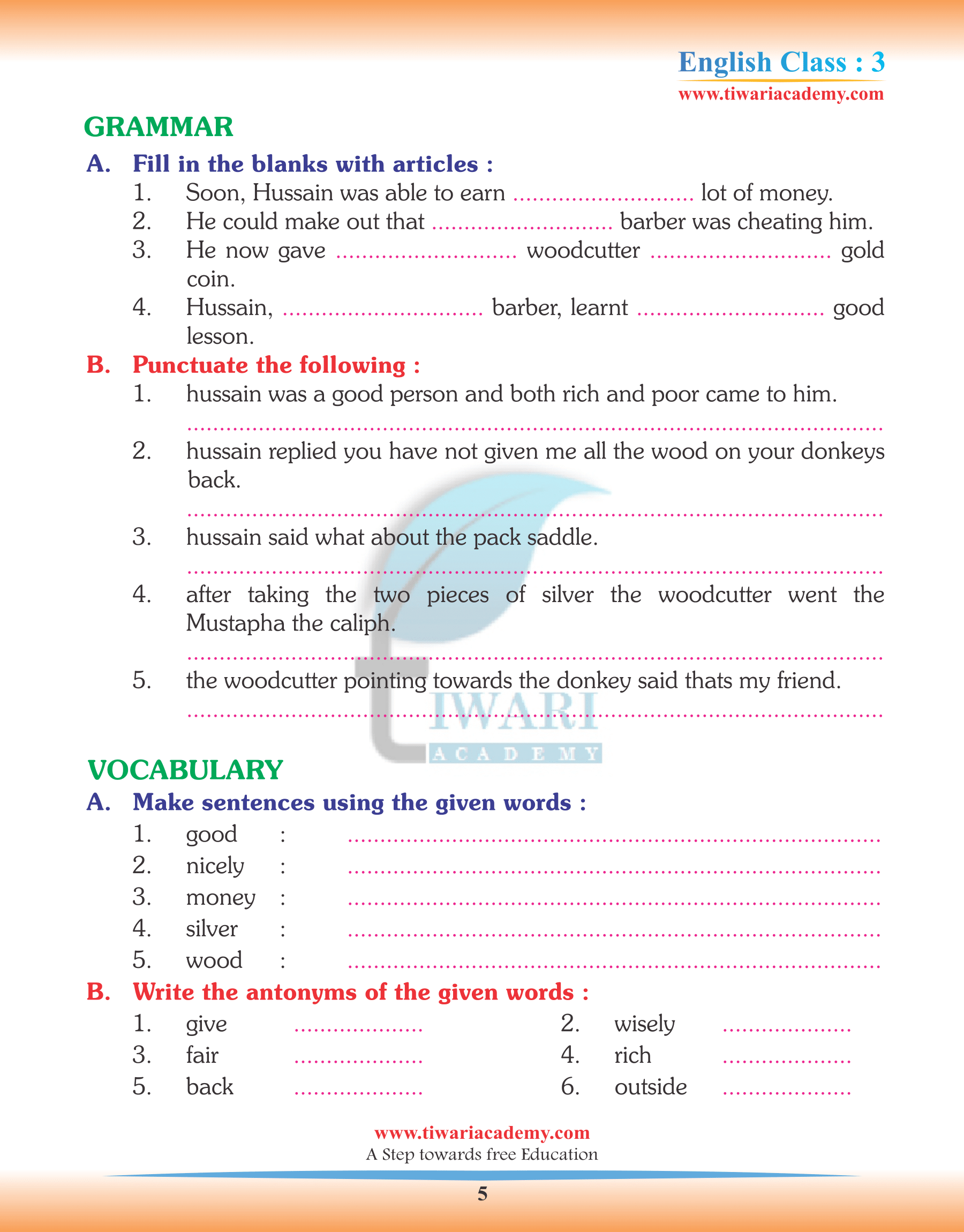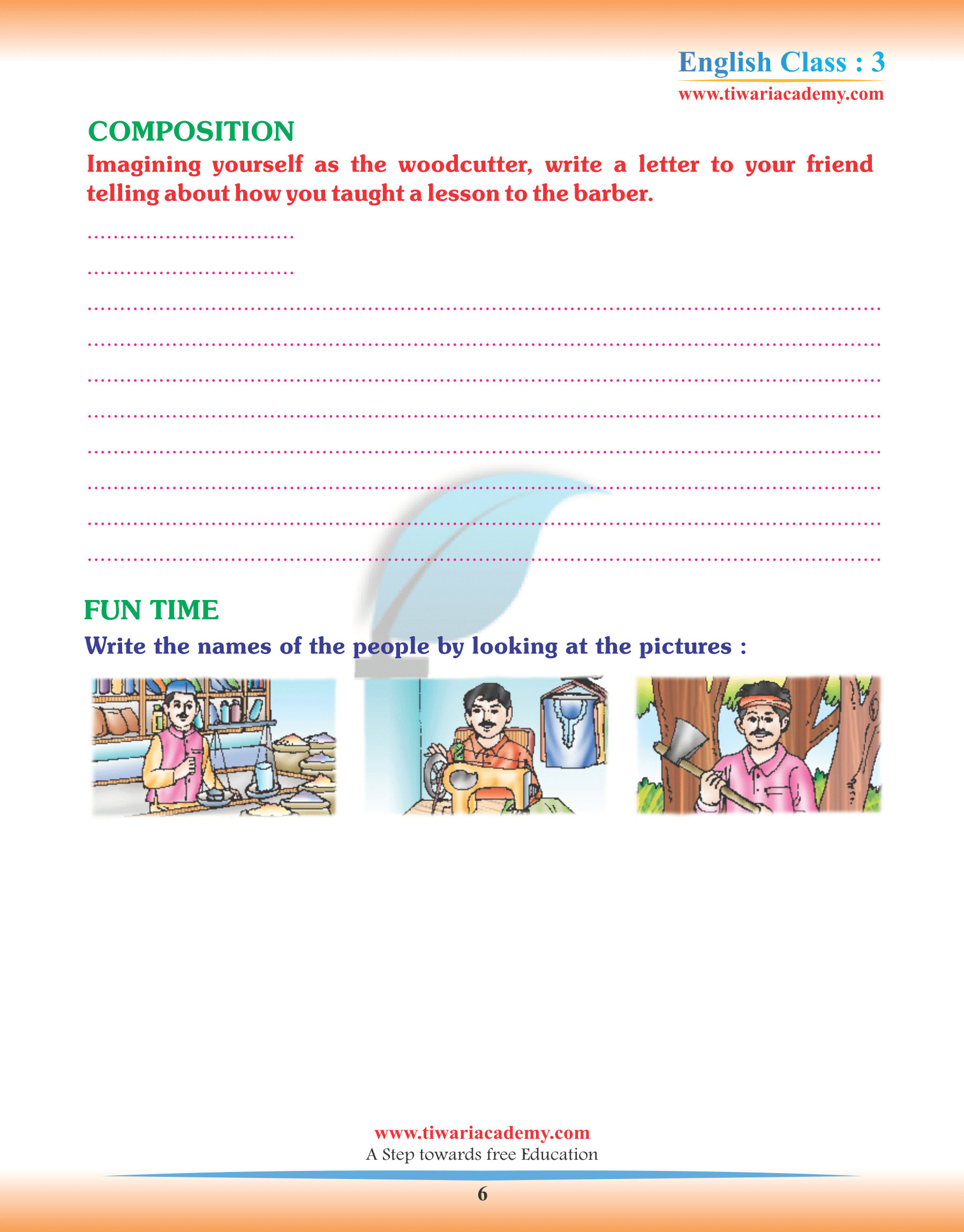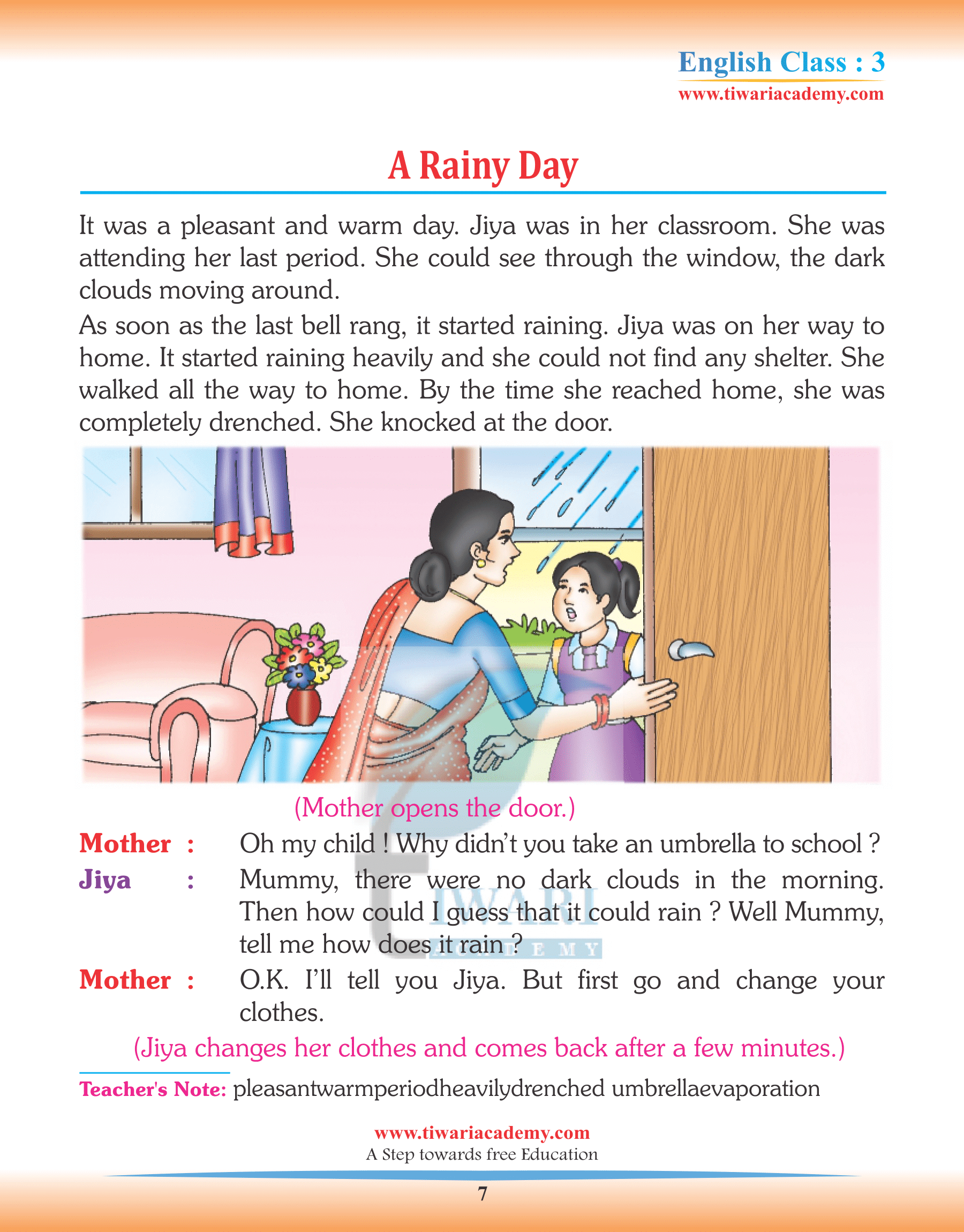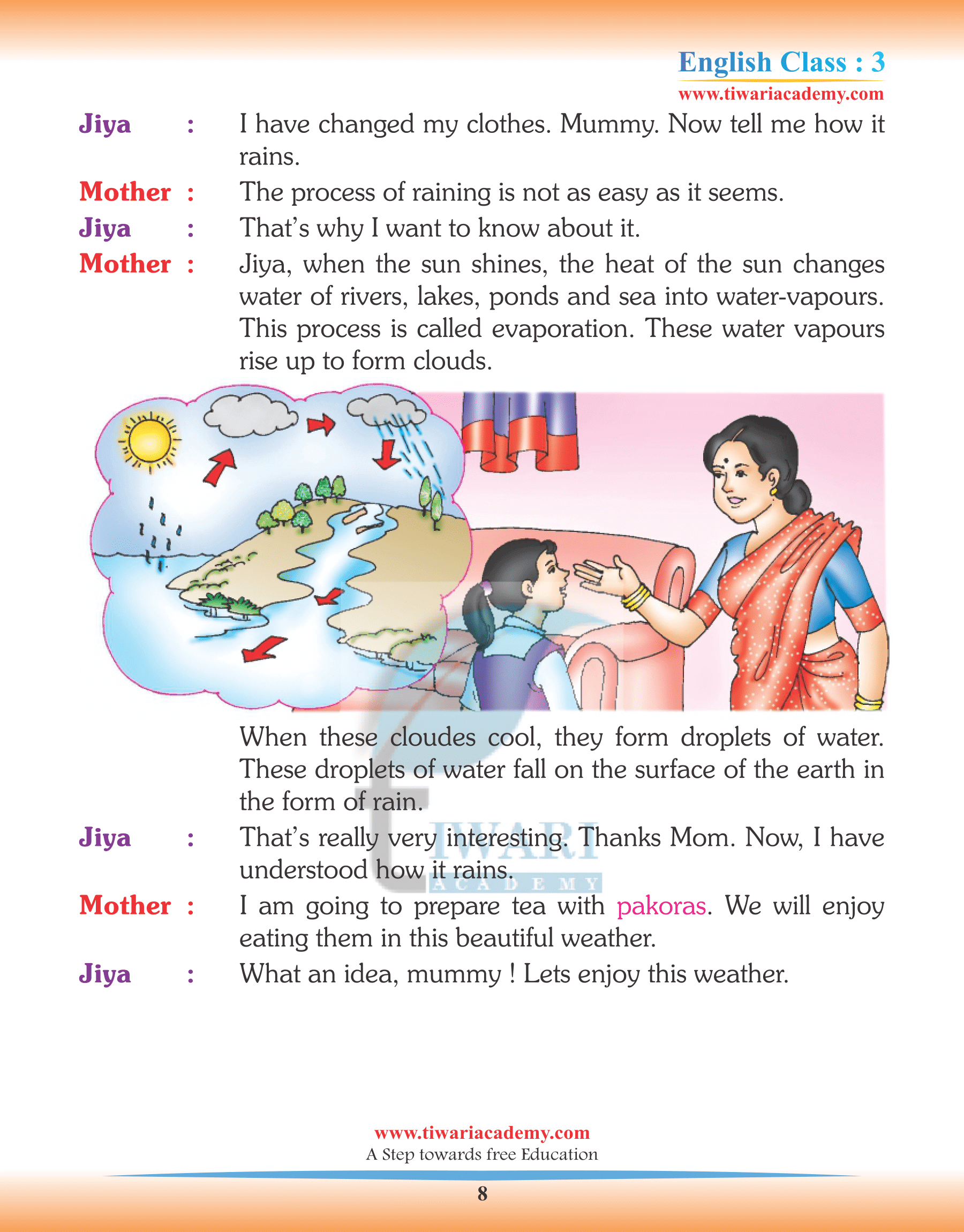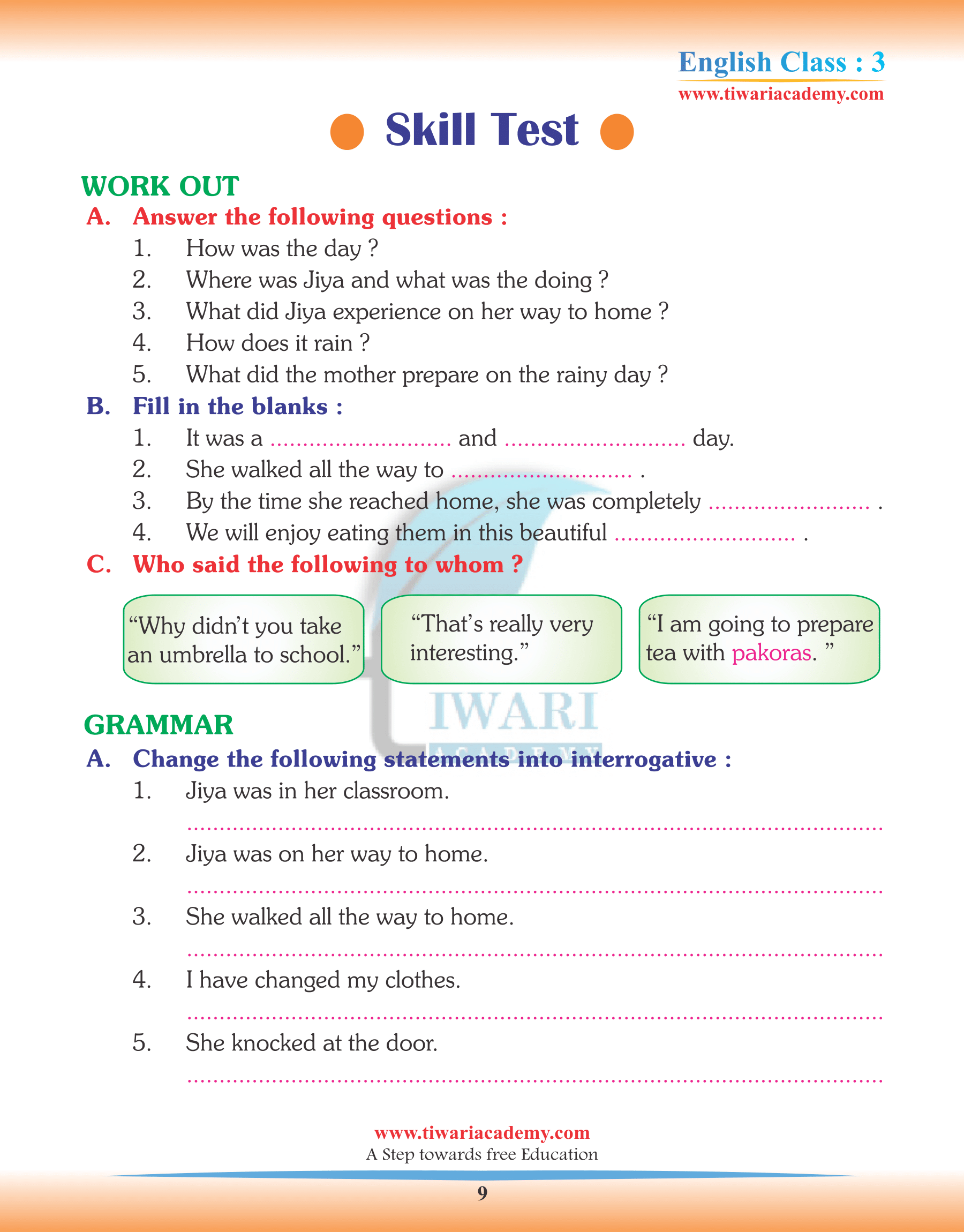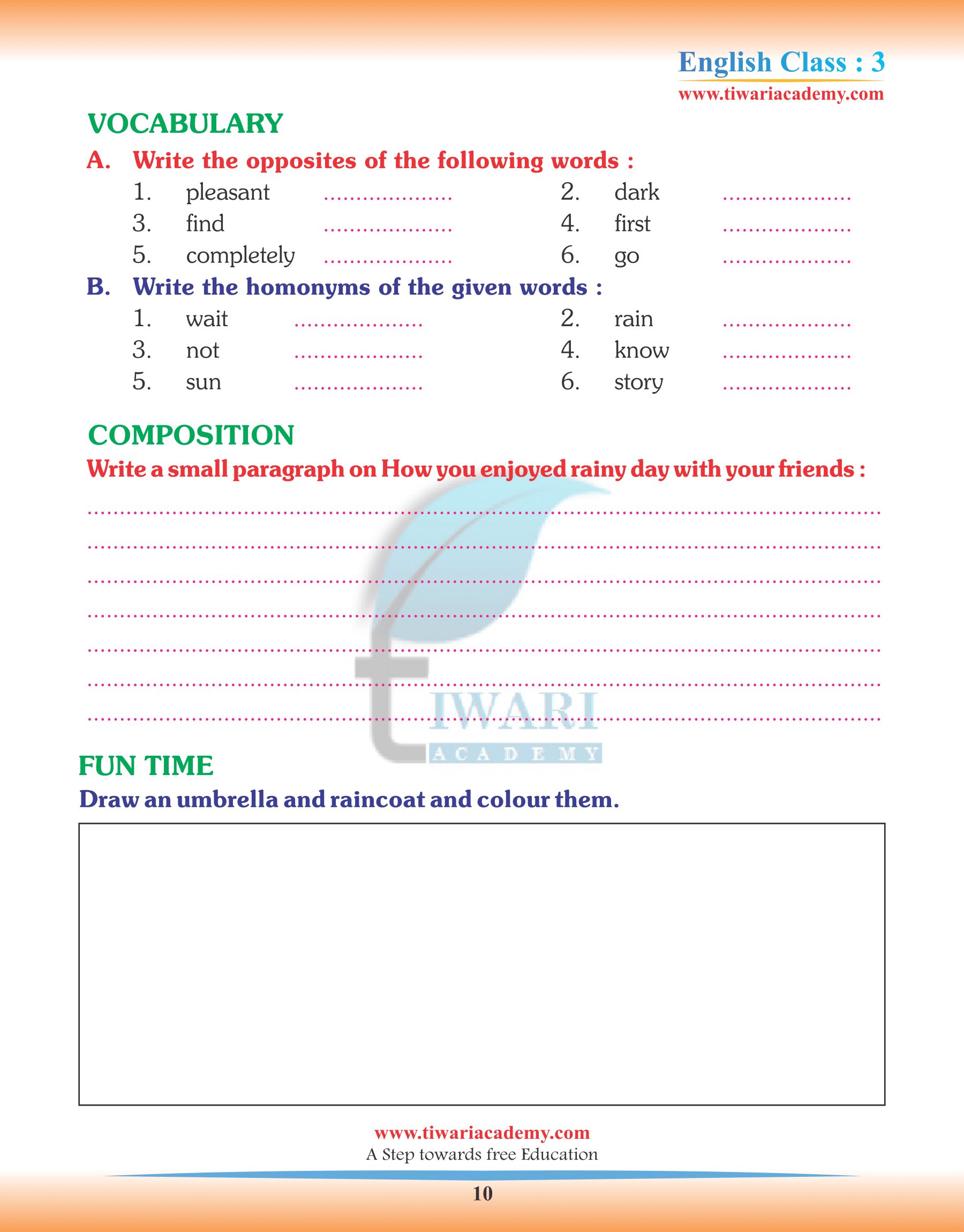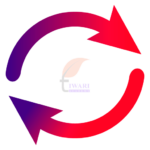NCERT Textbook Solutions for Class 3 English Santoor Chapter 6 Paper Boats with Hindi Translation and Marigold Unit 6 Chapter Trains and Chapter The Story of the Road for session 2025-26. Language learning at the foundational level serves as the stepping stone to effective communication and understanding NCERT Textbook Solutions for Class 3 English Chapter 6 is an integral part of this journey. The chapter Paper Boats from Santoor not only ignites imagination but also helps children explore the beauty of linguistic expression. Through the NCERT Santoor Textbook Class 3 English Paper Boats Answers, students gain a deeper understanding of sentence structure, vocabulary and the poetic rhythm of language.
Class 3 English Santoor Chapter 6 Paper Boats Question Answers
These English Book solutions are designed to align with the academic framework, providing clarity on each question and ensuring comprehension. Whether referring to Paper Boats Class 3 NCERT Solutions PDF or using physical books, every resource emphasizes building language fluency. A detailed summary and explanation of the Class 3 English Santoor NCERT Textbook Chapter 6 further enrich students’ grasp of figurative expressions, enabling them to connect language with creativity. All the solutions are prepared on the basis of the latest CBSE Syllabus for standard 3. A revision book for extra practice is also available to download in PDF, which helps in revising the contents. Assignments and exercises for practice are given at the end of the practice book, which is helpful for evaluation.
NCERT Solutions for Class 3 English Santoor Chapter 6 Paper Boats
The poem Paper Boats introduces young learners to the world of metaphors and personification, fostering their linguistic skills. NCERT Book Solutions Class 3 English Santoor Chapter 6 Exercise Solutions serve as a guide to explore these poetic devices while also strengthening grammar. The structured questions and answers in the NCERT Santoor Class 3 English Paper Boats Answers PDF help students build their vocabulary and refine comprehension techniques.
Engaging with Class 3 English Chapter 6 Questions and Answers also nurtures critical thinking, as students study the contextual meanings and underlying themes. By revisiting the Paper Boats Class 3 Summary and Questions, children can reinforce their understanding of rhyme and rhythm, essential elements of poetry. NCERT Class 3 English Textbook Santoor Chapter 6 PDF resources provide accessible study material that ensures holistic development of language skills.
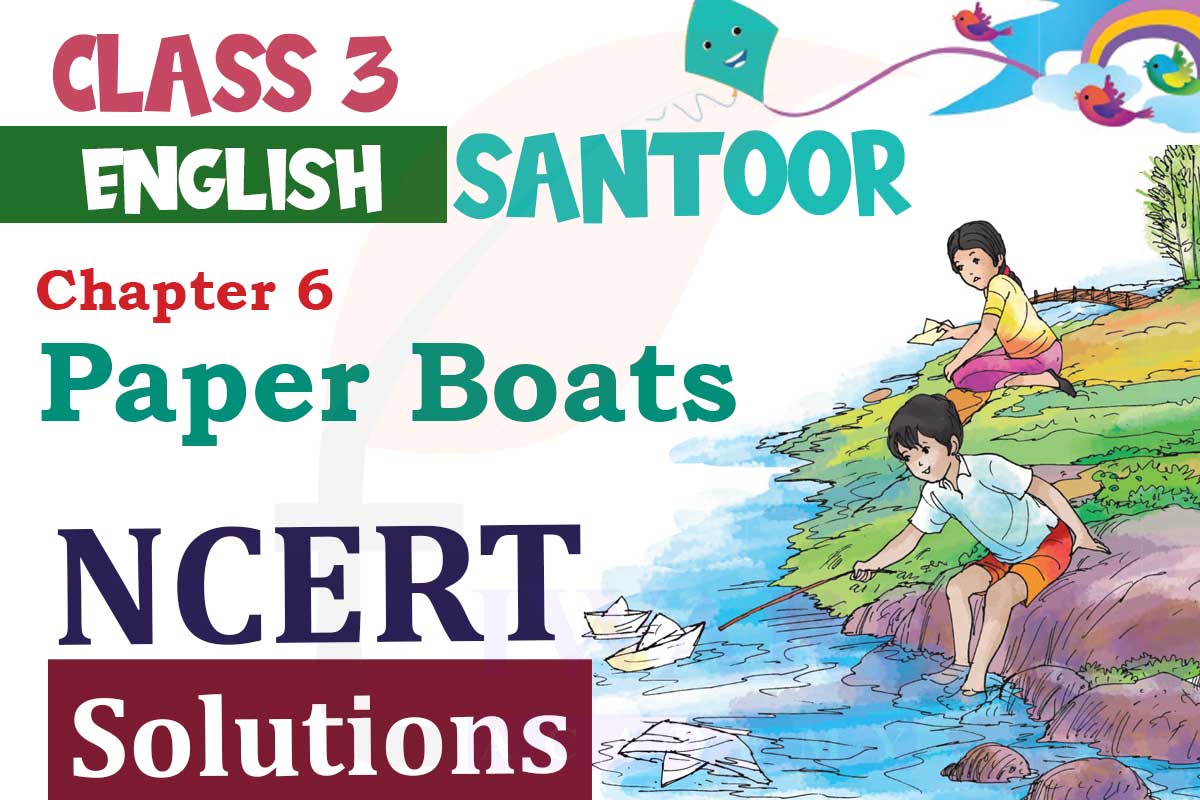
Important Points for Class 3 English Santoor Chapter 6 Paper Boats
1. Theme: The poem reflects a child’s imagination and joy in making paper boats.
2. Poetic Devices: Focus on metaphors and personification.
3. Translation and Vocabulary: Learn new words and their meanings.
4. Questions: Practice NCERT Class 3 English Paper Boats Answers.
5. Summary: Understand key ideas from the Paper Boats Class 3 Summary.
| Step | Task | Details | Time Allocation |
|---|---|---|---|
| 1 | Read the Poem | Understand the theme and emotions in Paper Boats. | 15 minutes |
| 2 | Learn Vocabulary | Review new words and their meanings from NCERT solutions. | 20 minutes |
| 3 | Practice Questions | Solve NCERT Class 3 English Chapter 6 Questions and Answers. | 30 minutes |
| 4 | Understand Poetic Devices | Focus on metaphors, personification and rhyme scheme. | 20 minutes |
| 5 | Revise Summary | Review the Paper Boats Class 3 Summary for a quick recap. | 15 minutes |
Developing linguistic abilities through literature begins with interactive and engaging content, like the NCERT Book Solutions for Class 3 English Chapter 6 Guide Paper Boats. The solutions emphasize understanding tone, theme and narrative flow, essential for appreciating the nuances of language. Students referencing Class 3 English Santoor Chapter 6 Explanation materials or NCERT Class 3 English Chapter 6 Solutions are encouraged to explore creative expression while improving sentence construction.
By analyzing the Class 3 English Santoor Chapter 6 Questions and Answers, learners gain insight into storytelling elements and improve their articulation skills. The Paper Boats NCERT Class 3 English Santoor Textbook Notes provide comprehensive guidance on word usage and syntax, making language learning enjoyable and effective. With NCERT Santoor Book Class 3 English Paper Boats Answers and the Paper Boats Class 3 Chapter Explanation, young readers cultivate a love for English while enhancing their linguistic proficiency.
Class 3 English Santoor Chapter 6 Paper Boats – Reading
Meena walked towards the stream near the bamboo bridge. She bent a little and put a paper boat in the water. It sailed down the stream
swiftly. Meena was delighted. She went on putting several paper boats in the stream. As the boats floated down the stream, she saw
a naughty boy pushing the boats into the water. Meena stared at the boy angrily. He did not care for Meena’s angry face. She shouted “Stop!” But the boy did not stop. “Why are you overturning the paper boats?” Meena asked angrily.
“Because it is fun,” replied the boy.
“It may be fun for you, but those are my paper boats” said Meena. “So, you just stop overturning my boats.” The boy thought for a minute and said, “I will not do it again, but I also want to play. Can you help me?”
Meena said, “I have enough paper. You can make boats for yourself.”
The boy answered, “I don’t know how to fold the paper to make boats.”
Meena said, “That’s easy, I will help you.” She showed him how to make the boats. Meena took out coloured paper of different sizes. She showed the boy how to fold and re-fold the paper to make a boat. The boy watched carefully. Then he took a piece of paper and started to make a paper boat. Soon a few boats were ready.
Meena gently put her boats in the stream. The boy put his boats in the stream too. The boats sailed down the stream. Both enjoyed watching the boats.
Class 3 English Santoor Chapter 6 Paper Boats – Important Questions
What was Meena doing near the stream?
Meena was putting paper boats in the stream near a bamboo bridge.
What did the boy do to the paper boats?
The boy was overturning the paper boats in the stream.
How did Meena react to the boy’s actions?
Meena initially reacted angrily and shouted at the boy to stop overturning the boats.
What solution did Meena offer to resolve the conflict?
Meena offered to teach the boy how to make his own paper boats, providing him with paper and showing him the folding technique.
Class 3 English Chapter 6 (Trains) Questions and Answers
Where do the trains run?
Over mountains, Over River and Over Plains.
What are the ‘‘precious loads’’ that they carry?
Mail and passengers.
When do the trains run?
Trains runs day and darkness and Dusk and dawn.
What is ‘dusk’ and ‘dawn’?
After evening and before night is dusk and Dawn is before sunrise in morning.
Class 3 English Santoor Chapter 6 Paper Boats – Summary
Meena enjoyed floating paper boats on a stream near a bamboo bridge when a boy began overturning them for fun. Despite her initial anger and his disregard for her protests, the situation eased when Meena offered to help him make his own boats. She taught the boy how to fold paper boats using colorful paper of various sizes. After learning, the boy made several boats himself. Together, they launched their boats into the stream, finding joy in watching them sail away. This experience transformed a moment of conflict into one of shared happiness and cooperation.
Class 3 English Chapter 6 (The Story of the Road) Questions and Answers
What sounds do you hear on the road in the morning?
Birds Chirping sound, Tring a ling of newspaper boy, Tramp and chatter of vegetable man sounds of can be heard in the morning on the road.
What is the vegetable man selling?
Peas, carrots, Cabbage, potato, onion, tomato etc.
Why is the road annoyed with the crow?
The road is annoyed because it is already wide awake but still the bird and crow is asking it to wake up.
What was the outcome of Meena teaching the boy how to make paper boats?
After learning to make his own paper boats, the boy joined Meena in putting them in the stream, and both enjoyed watching the boats sail together, turning the conflict into a cooperative and joyful activity.
Sort out these different means of transport into correct groups. (Bus, Car, Aeroplane, Ship, Boat, Train, Bicycle, Helicopter, Truck, Steamer)
| Land | Air | Water |
|---|---|---|
| Bus | Aeroplane | Boat |
| Train | Helicopter | Ship |
| Bicycle | – | Steamer |
| Car | – | – |
| Truck | – | – |
Complete the sentences select correct word from box:
1. Give me some ______ to eat. (food/clothes)
2. Play with ____. (me/grey)
3. Swim across _____. (the river/the boat)
4. Let’s get on the ______. (train/dawn)
Answers:
1. food
2. me
3. the river
4. train
What is the significance of NCERT Solutions for Class 3 English Chapter 6 Paper Boats?
NCERT Santoor Solutions for Class 3 English Chapter 6 Paper Boats play a vital role in helping young learners understand the poem’s linguistic and creative aspects. These solutions provide detailed explanations and Class 3 English Chapter 6 Questions and Answers, making it easier for students to grasp key concepts like vocabulary, rhyme and poetic devices. The solutions also include summaries, such as the Paper Boats Class 3 Summary, Hindi Translation and Questions, which simplify complex ideas into digestible parts. By referring to the NCERT Class 3 English Paper Boats Answers PDF, students can improve their language skills, critical thinking and appreciation of poetry’s rhythm and imagery.
Why do you think the poet made the pome on trains?
Cars and Trains are one of the things kids like the most as it is big tall and have many wheels. Trains are a cheaper way to travel and very old too.
How do the NCERT Class 3 English Paper Boats Answers enhance vocabulary and comprehension?
NCERT Textbook Santoor Class 3 English Paper Boats Answers are crafted to enhance vocabulary and comprehension skills through structured solutions and explanations. By engaging with Class 3 English Santoor NCERT Book Chapter 6 Solutions, students encounter new words and learn how to use them in context. The Paper Boats Class 3 English Notes help clarify sentence structures, while the Class 3 English Santoor Chapter 6 Explanation deepens understanding of poetic elements. Regular practice with the Class 3 English Chapter 6 NCERT Santoor Solutions ensures that students not only memorize answers but also develop their ability to interpret themes, improving overall language proficiency.
Does this poem in unit 6 chapter 1 from class 4th Marigold have some kind of teaching?
This poem is for fun and also teaches little about the trains and what they carry and from where till where it runs to encourage curiosity in kids.
What resources are available for understanding Class 3 English Chapter 6 Paper Boats?
There are numerous resources available for understanding Class 3 English Chapter 6 Paper Boats, including NCERT Santoor Class 3 English Paper Boats Answers and Santoor Chapter 6 PDF materials. These resources offer a comprehensive overview, including the Class 3 English Santoor Chapter 6 Questions and Answers and Paper Boats Class 3 Summary and Questions. Students can use the Paper Boats Class 3 NCERT Complete Solutions PDF for easy access to study materials that explain key concepts like vocabulary, poetic devices and sentence construction. The combination of summaries, explanations and answers makes these resources an essential part of mastering the chapter.
What do you think the poem unit 6 chapter 1 from Marigold class 4th language is tough?
The language is not tough but new words are being introduced in the story which you can see the meaning at the end of the story.
How does the chapter Paper Boats help in developing critical thinking?
The chapter Paper Boats from Class 3 English Santoor NCERT Textbook develops critical thinking by encouraging students to interpret poetic themes and metaphors. NCERT Santoor Solutions Class 3 English Exercise Chapter 6 focus on deeper analysis, guiding learners to explore symbolic meanings and emotional undertones. The Class 3 English Chapter 6 Questions and Answers prompt students to think beyond surface-level comprehension, while the Paper Boats Class 3 English Notes help them connect language with creativity. Engaging with the Paper Boats Class 3 Summary and Questions allows students to critically analyze the poet’s intent, enhancing their ability to think and articulate ideas independently.
Is this poem unit 6 chapter 2 from Marigold of class 4th used tricky language?
The poet used the expression words and birds voice bird which is a little tricky and fun to read.
Why is it important to use NCERT Solutions Class 3 English Santoor Chapter 6 for practice?
Using NCERT Textbook Solutions Class 3 English Santoor Chapter 6 for practice is important because it provides a structured approach to understanding the poem Paper Boats. These solutions include Class 3 English Chapter 6 NCERT Solutions, offering clear explanations of complex ideas like poetic devices and rhythm. The Class 3 English Santoor Chapter 6 Explanation helps students build vocabulary and interpret themes effectively. Regular practice with the Paper Boats Class 3 English Notes strengthens comprehension skills, while the Paper Boats Class 3 NCERT Solutions PDF offers accessible learning material for revision. These resources ensure a well-rounded grasp of the chapter’s linguistic and creative elements.
The poet in the poem unit 6 chapter 2 from class 4th Marigold tells us about the road. How do you think the road is?
The road is awake but still, the birds are trying to alert it by telling it who is coming to wake him up and then it got agitated and said it is already awake.
Why do you think it was important to wake the road up in the poem unit 6 chapter 2 from class 4th Marigold?
It is important to wake the road up because the children vegetable cart and even newspaper boy will walk on it.
